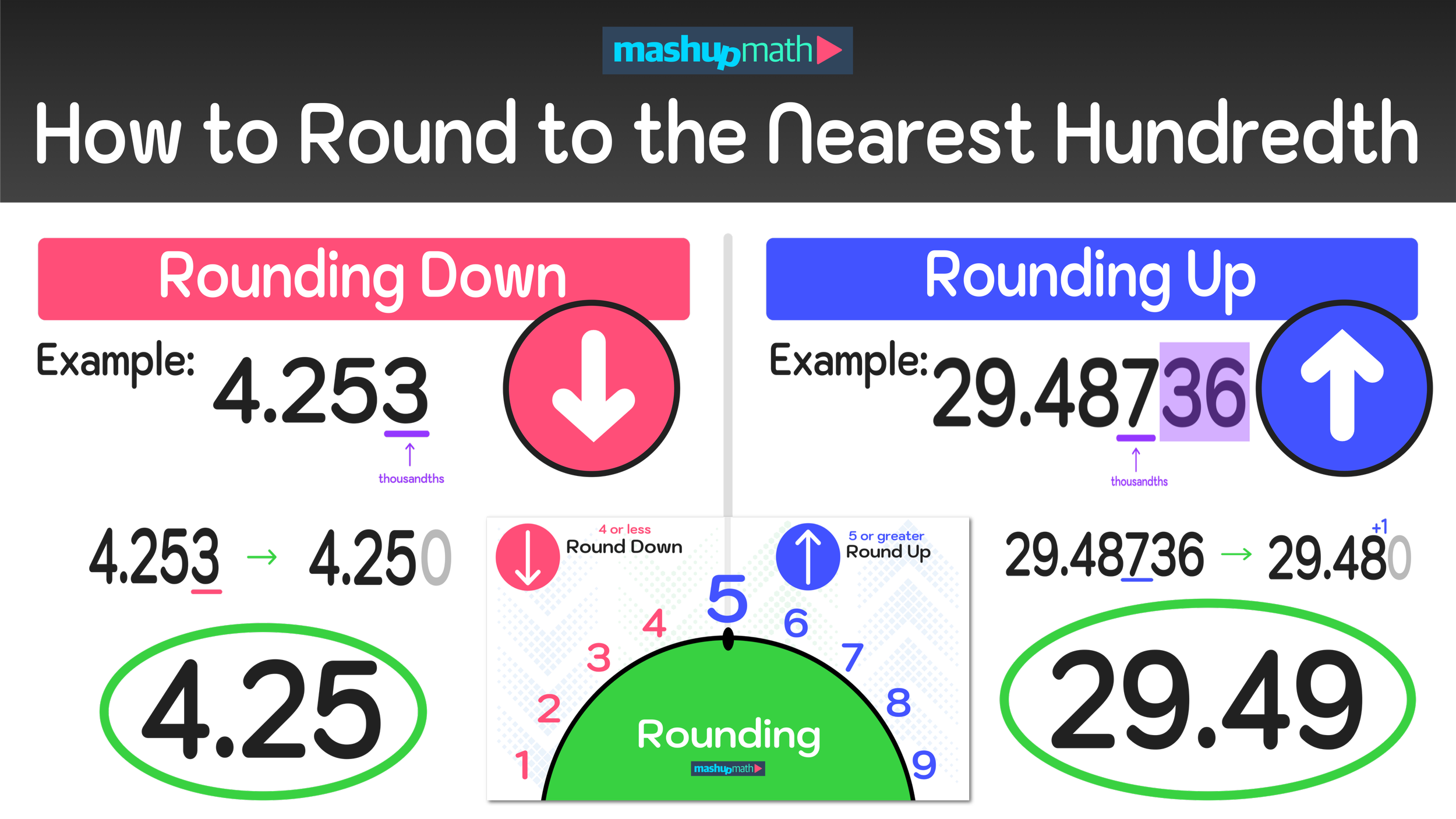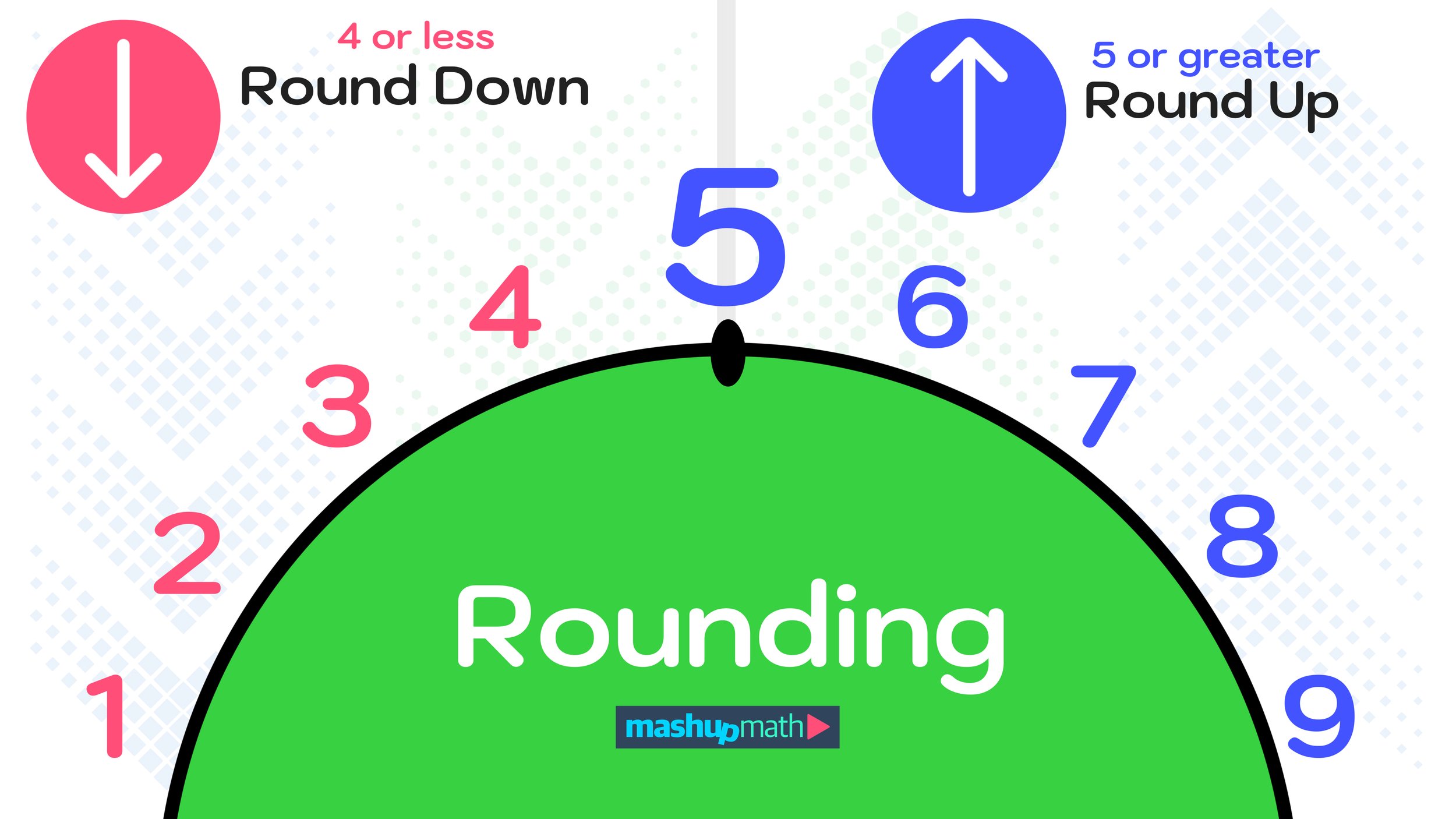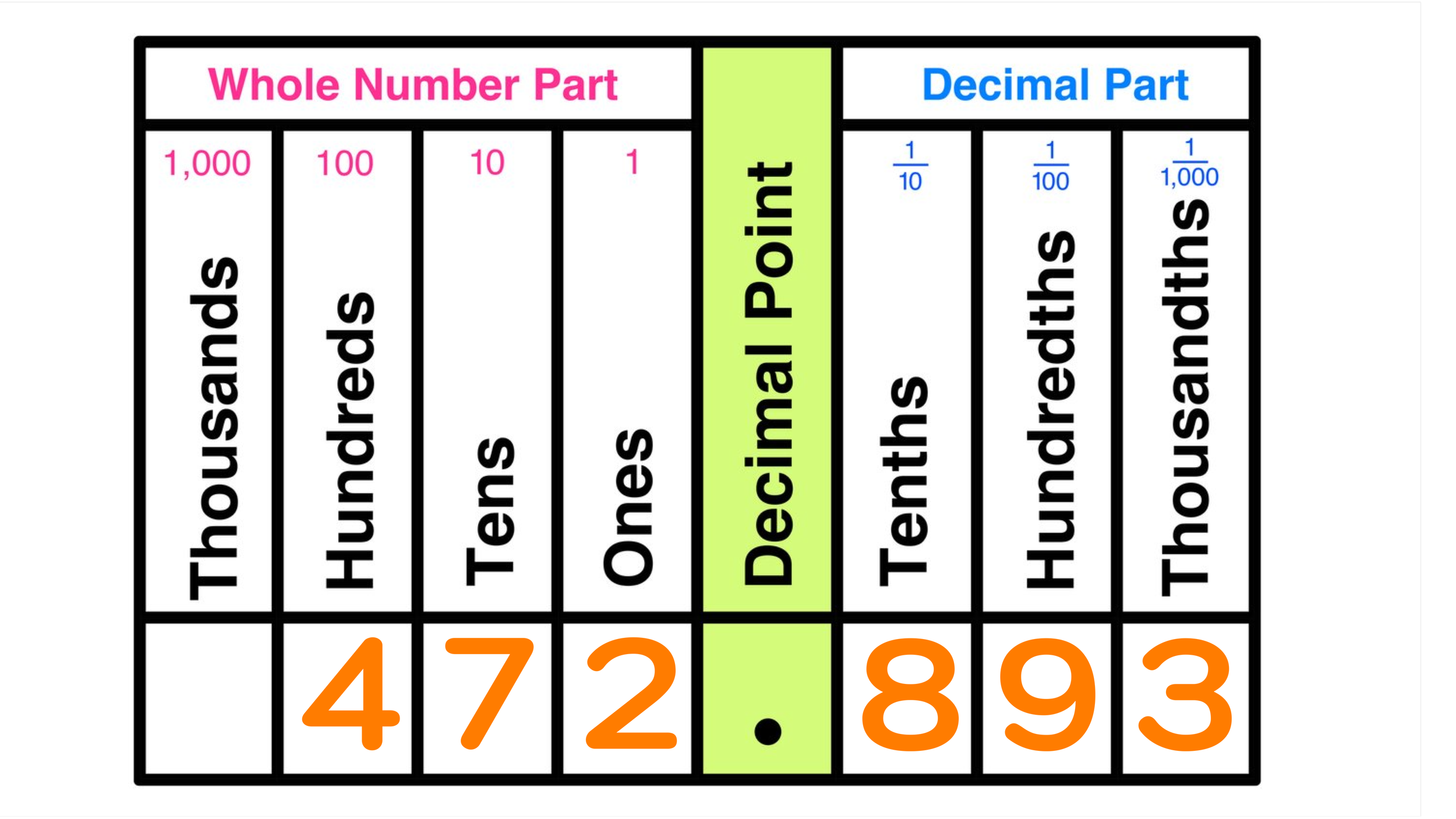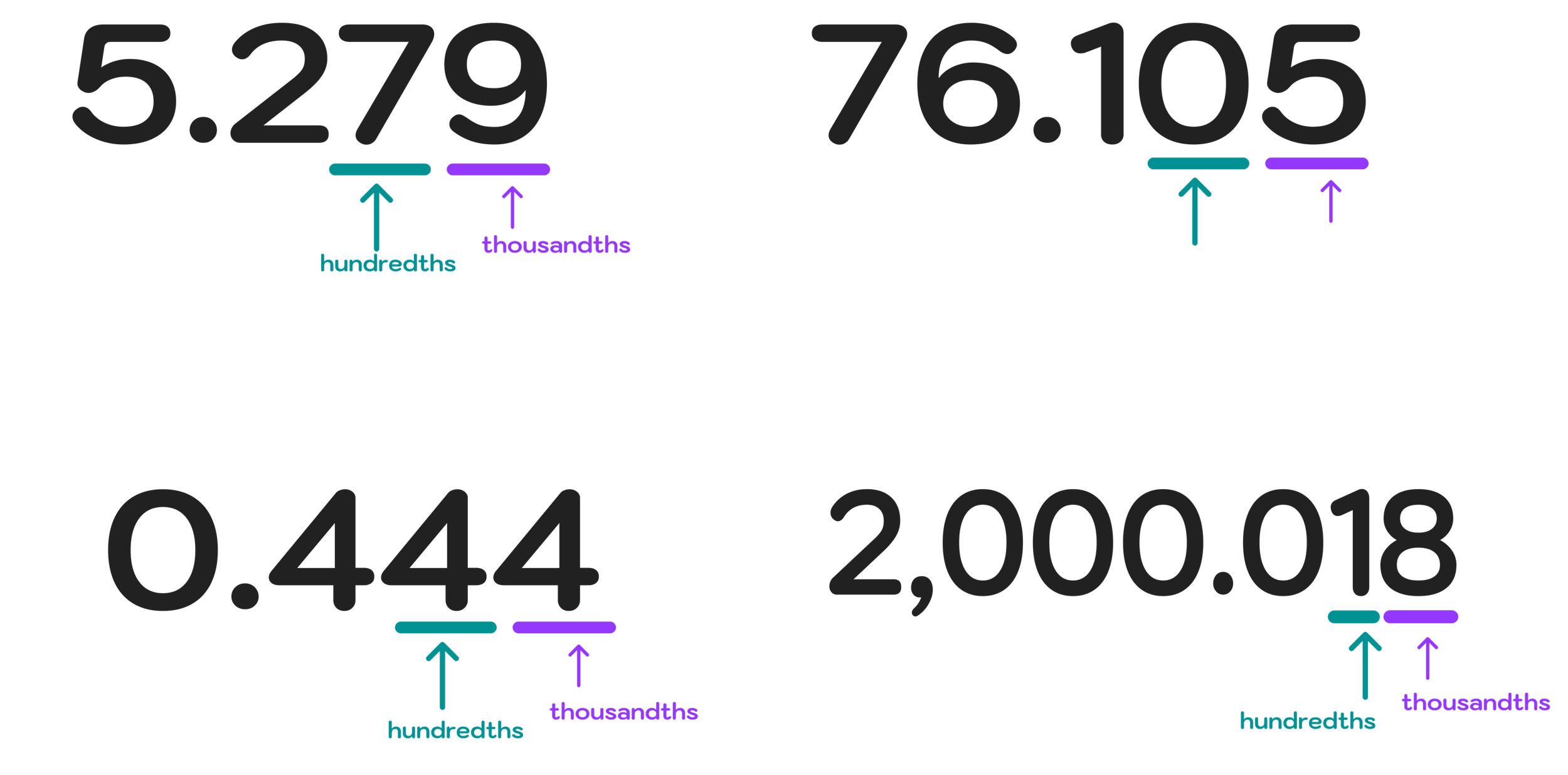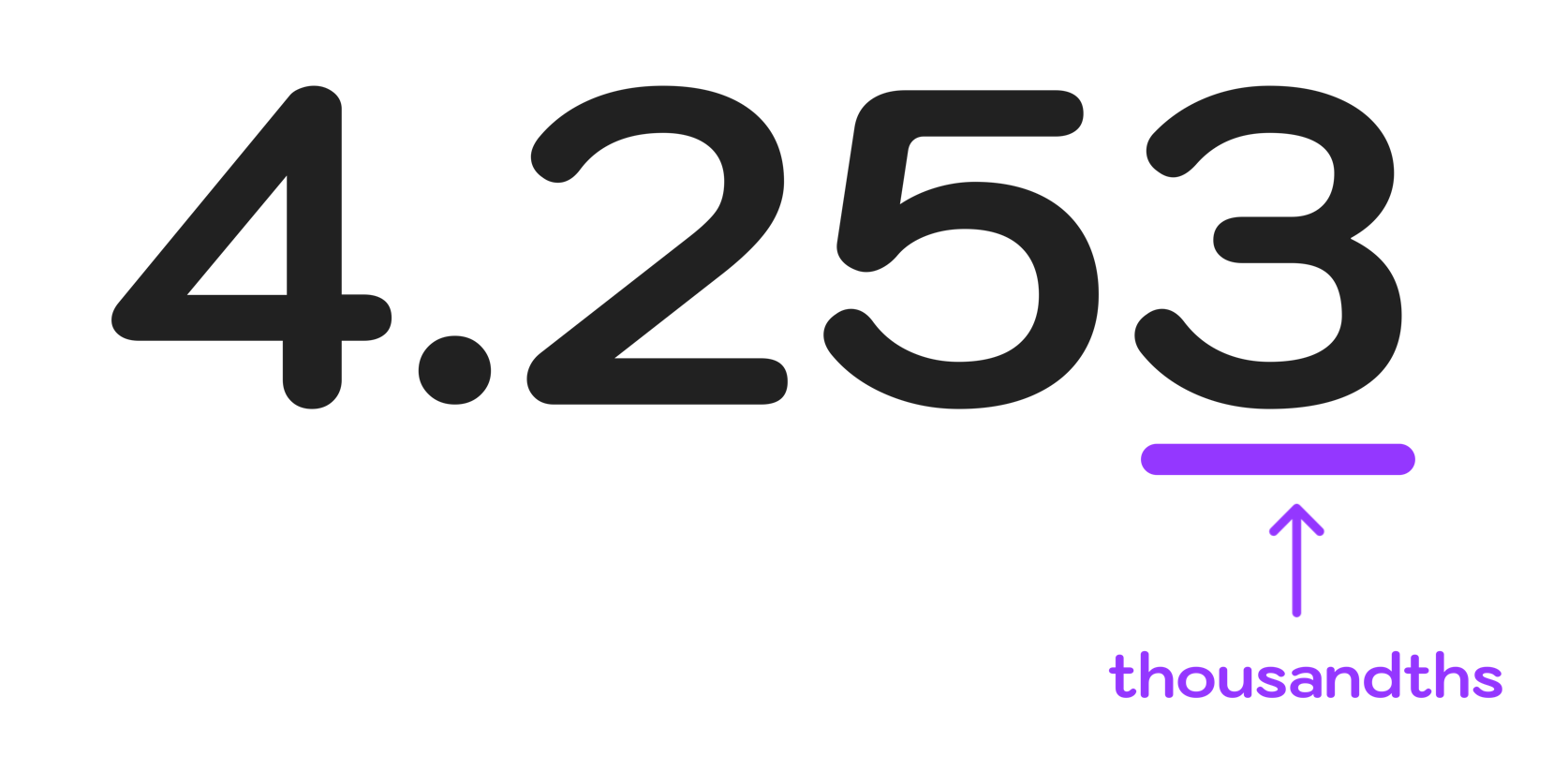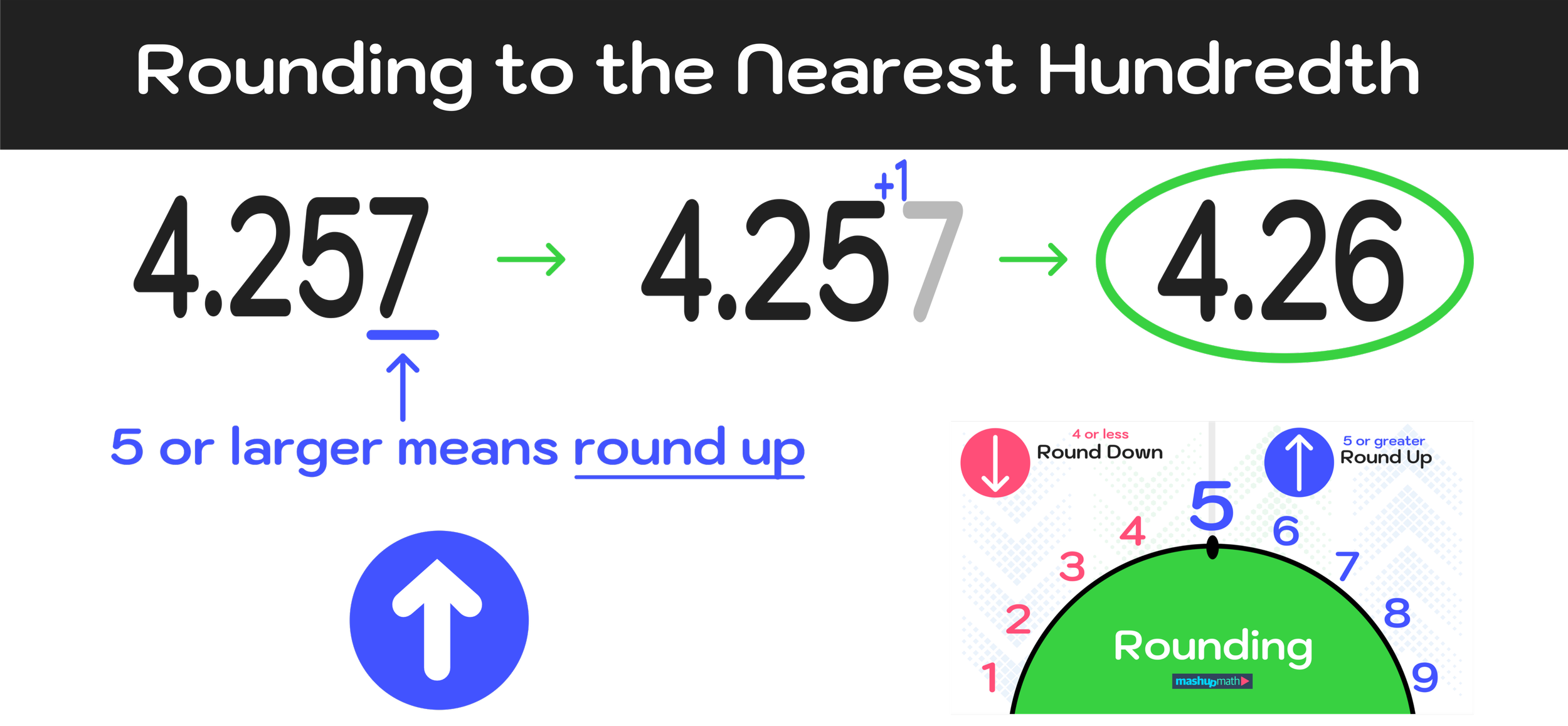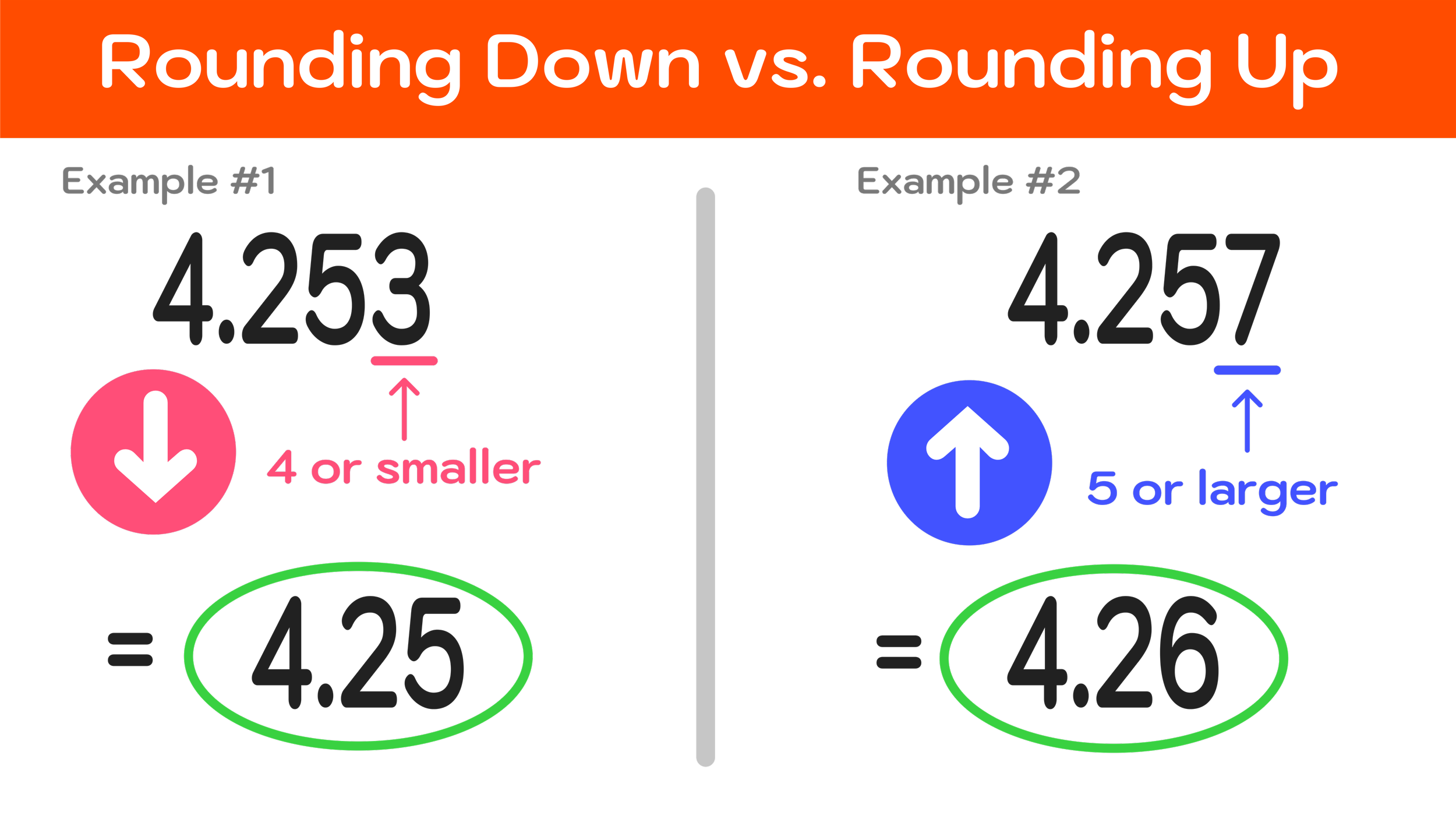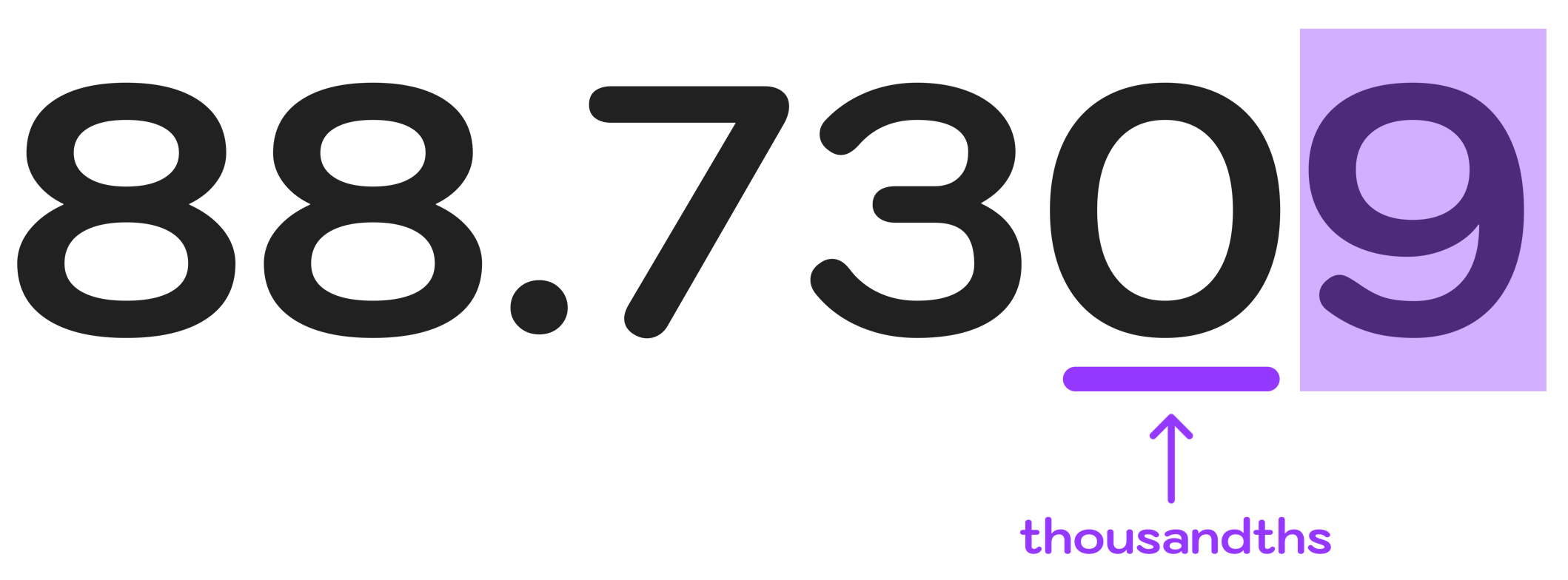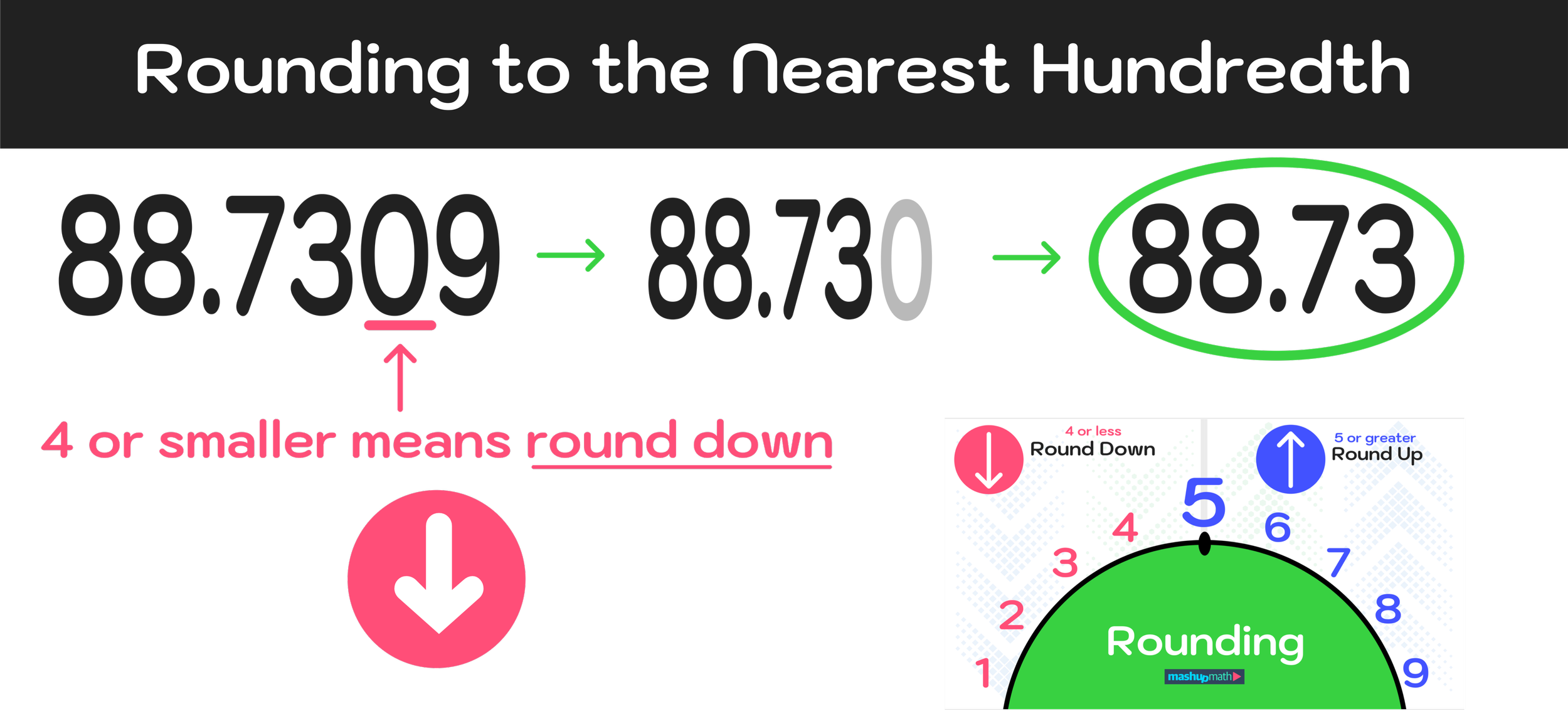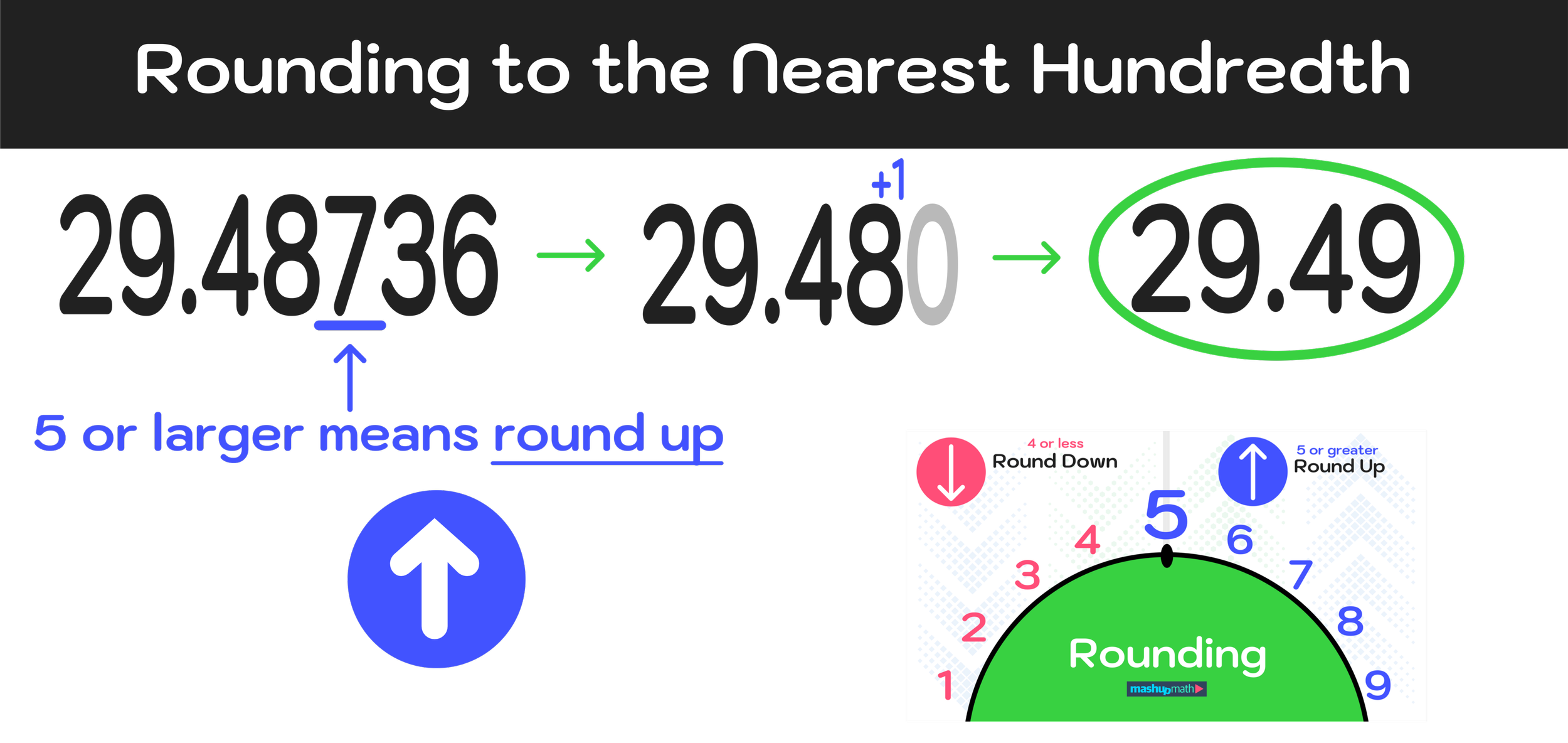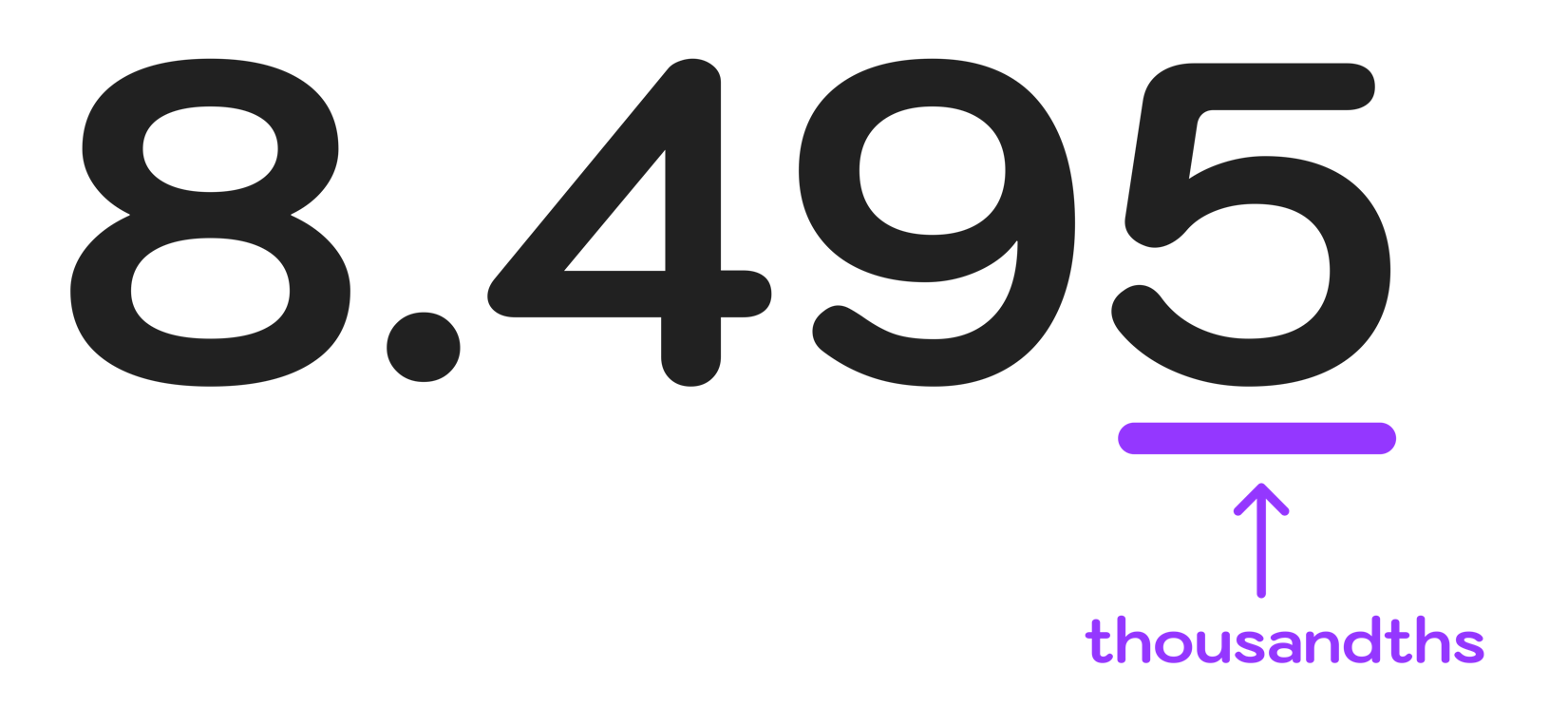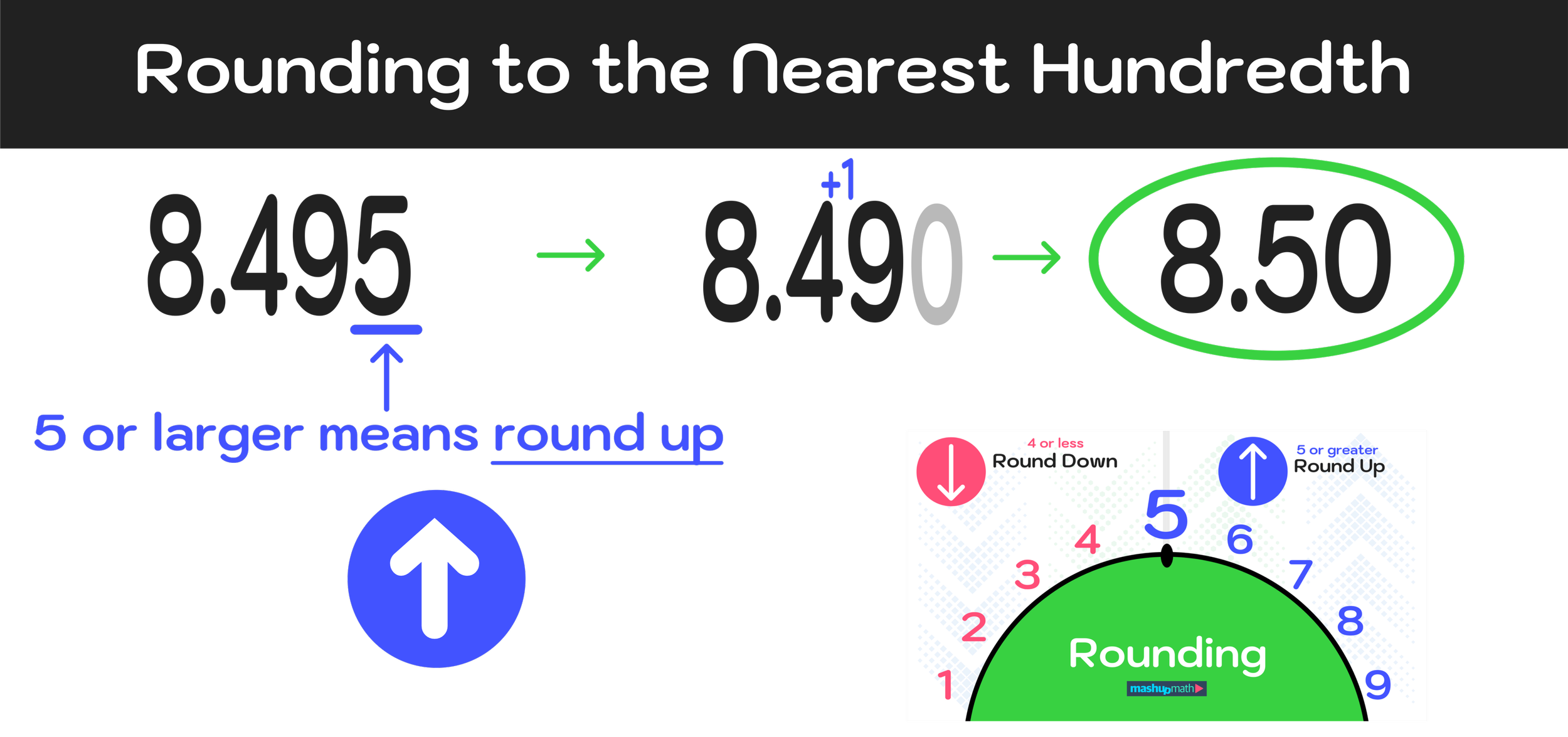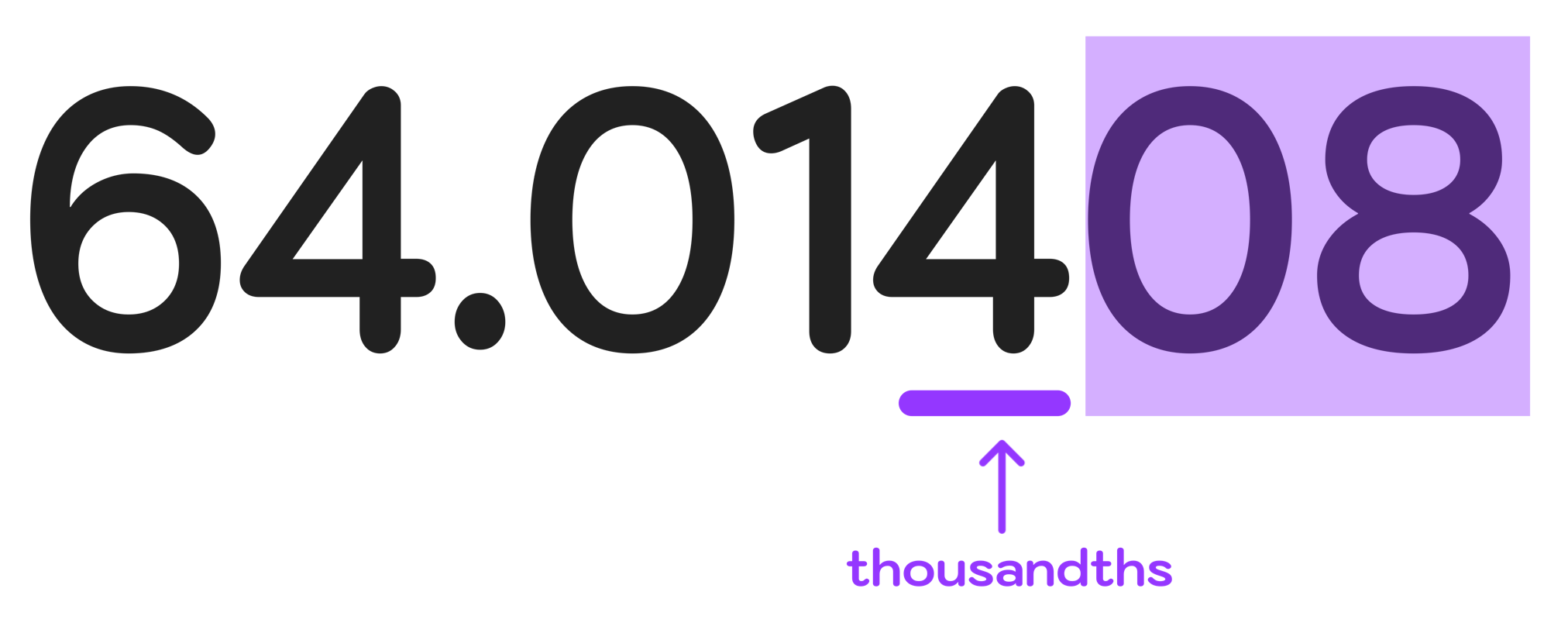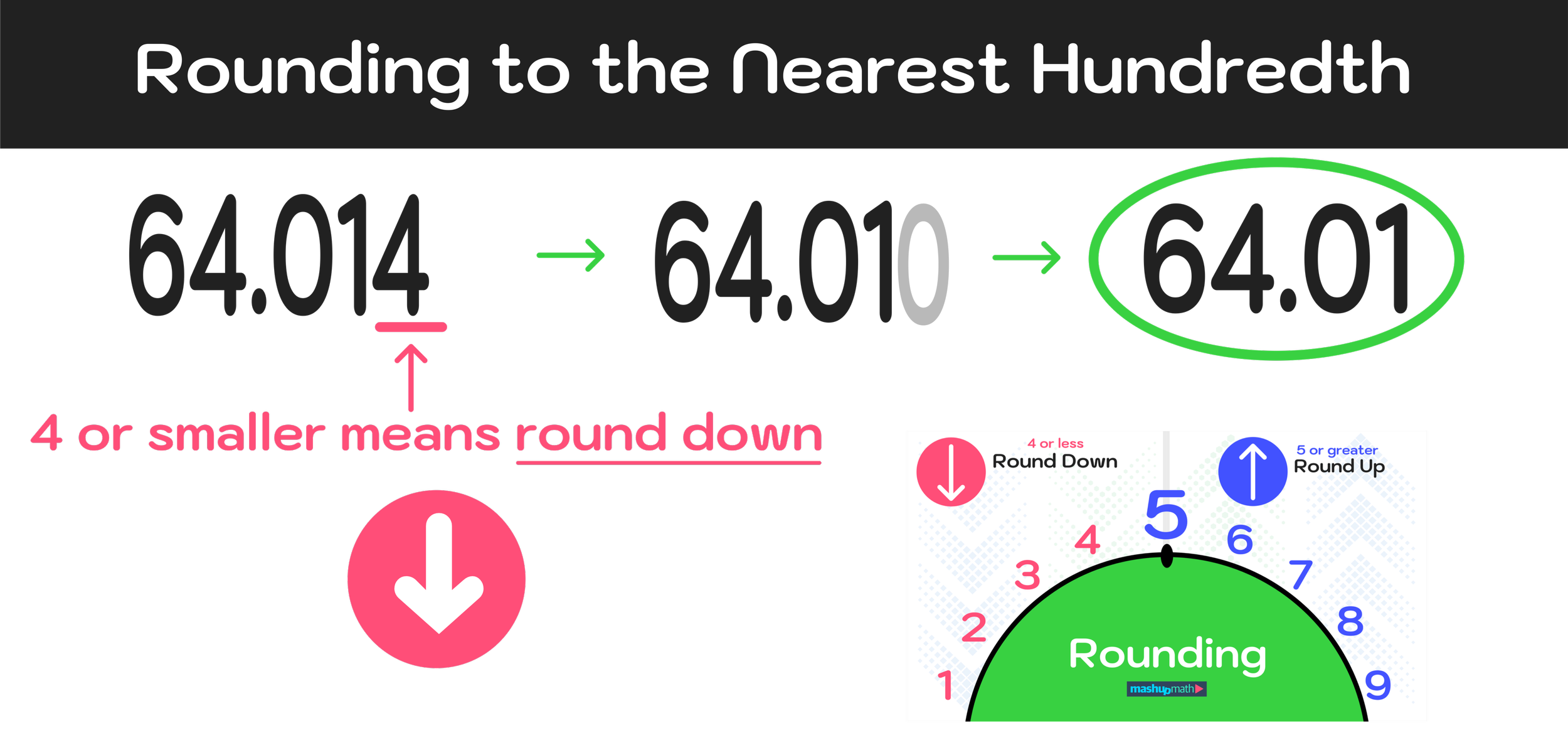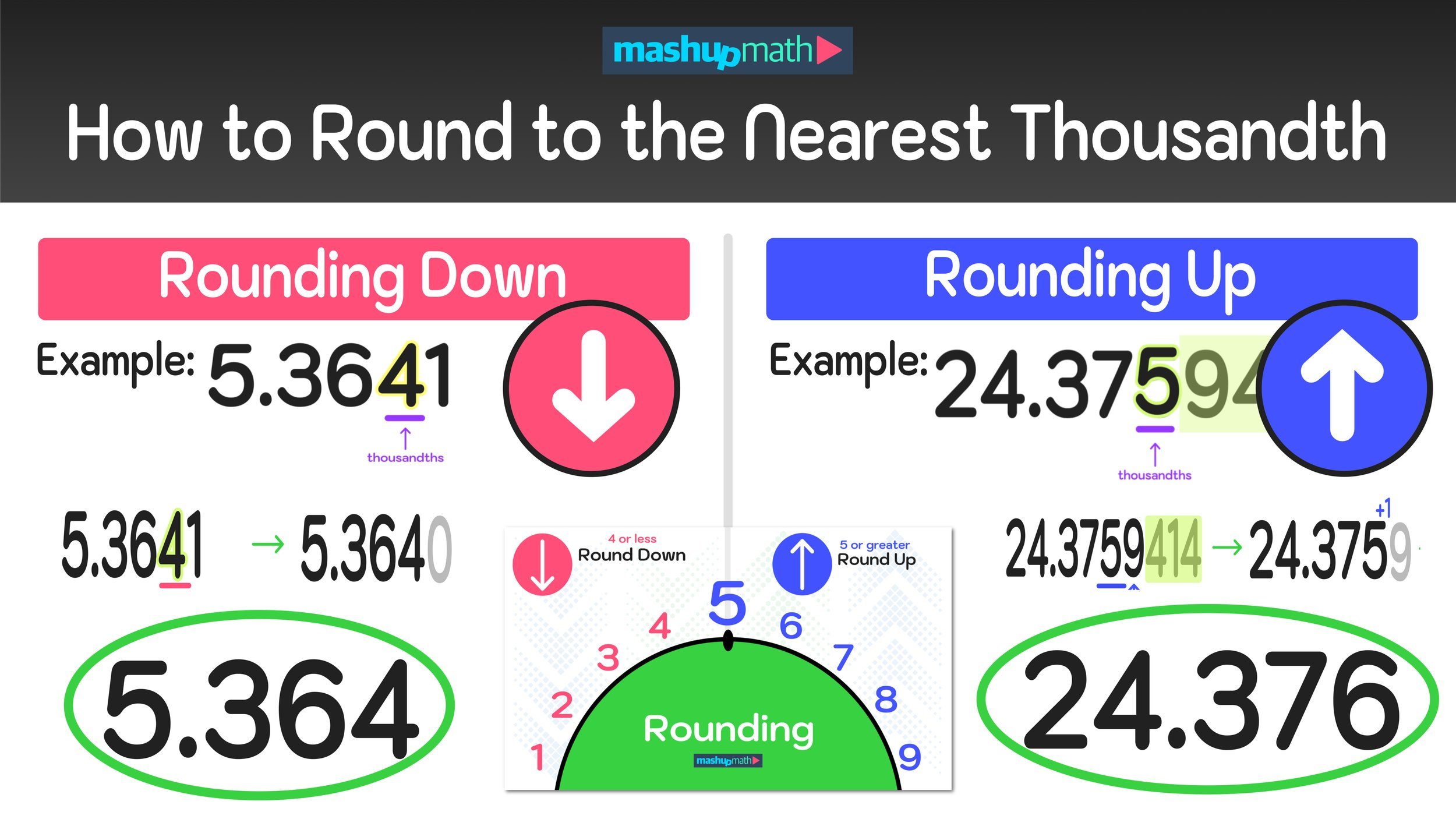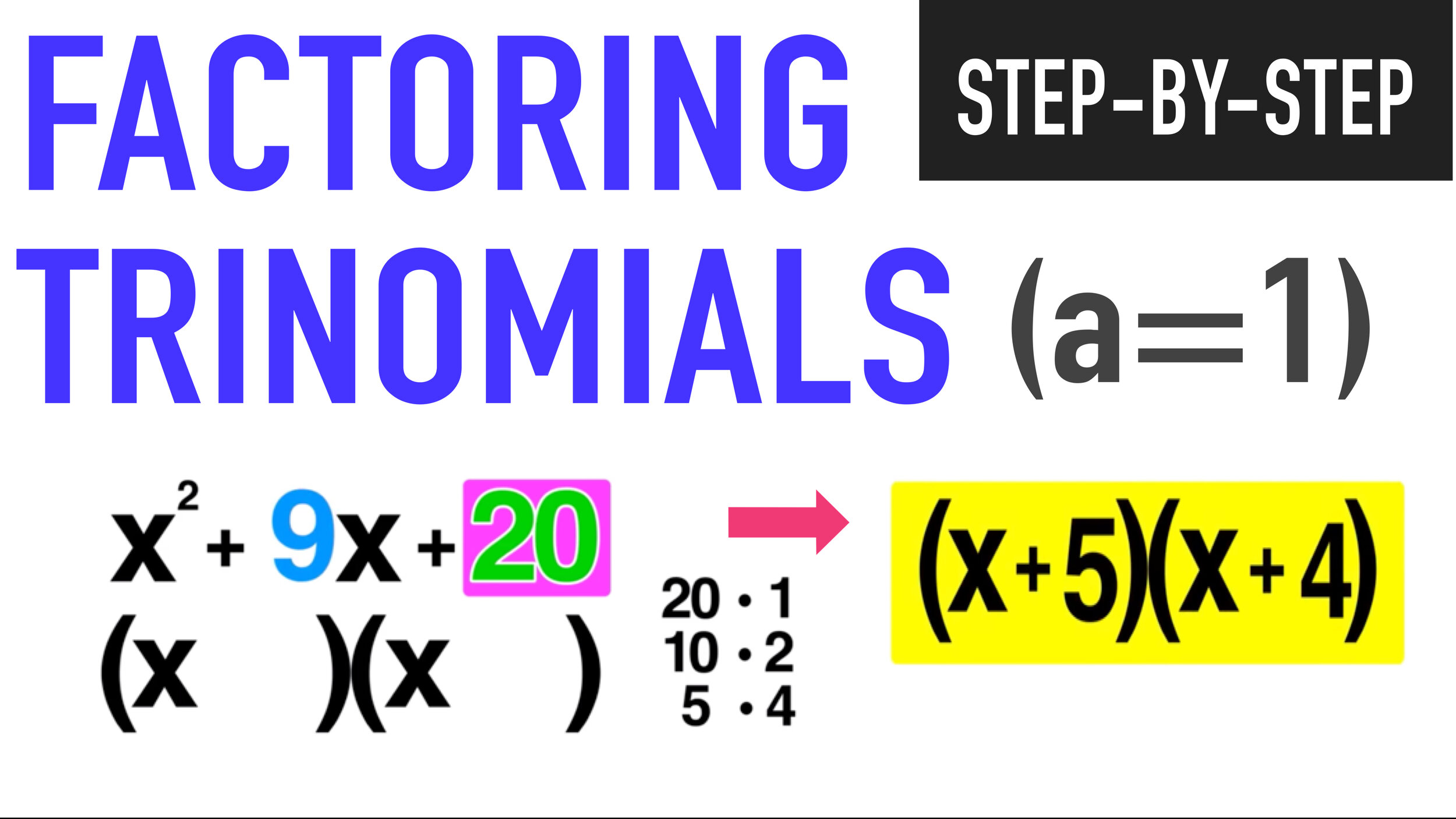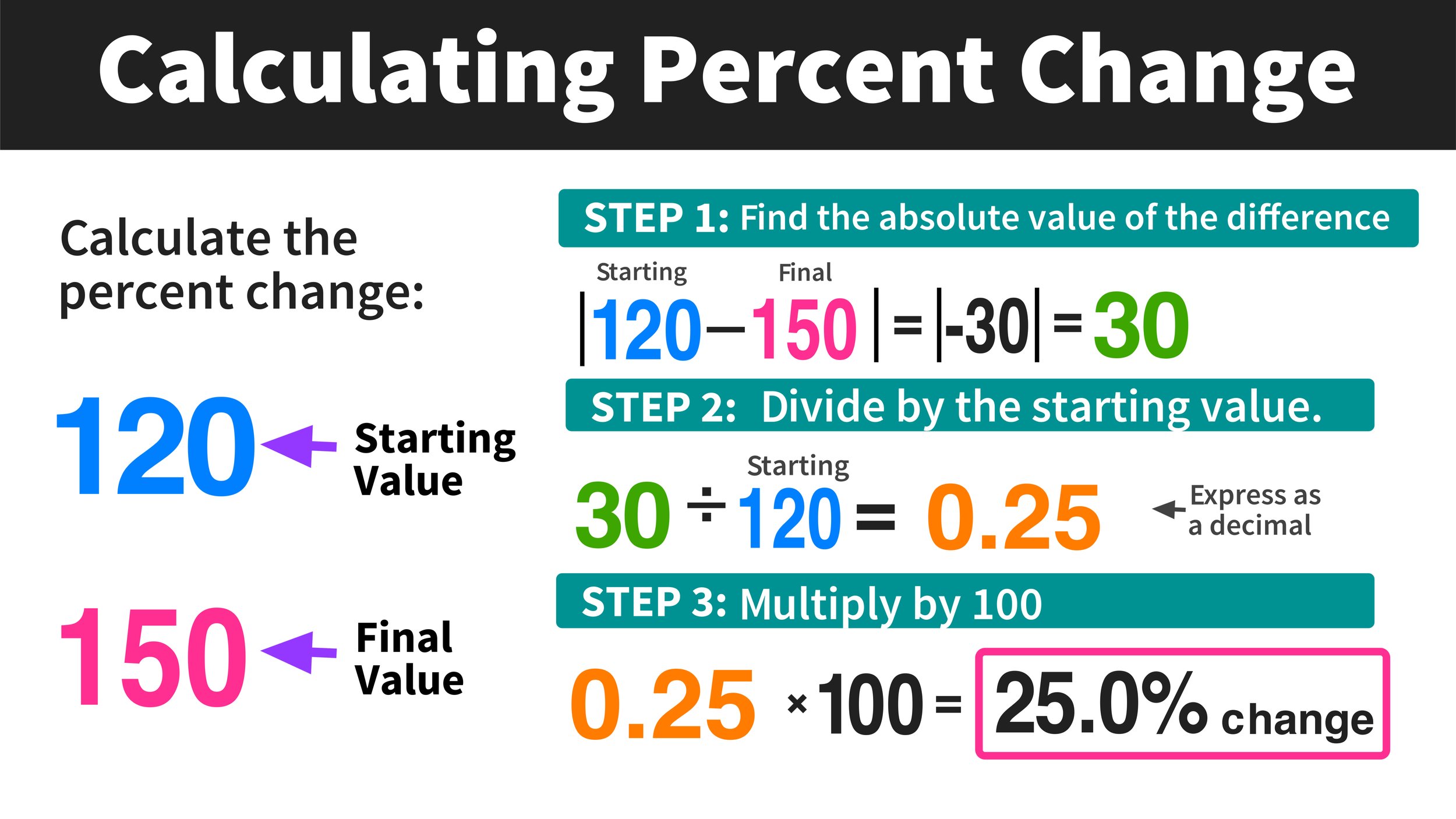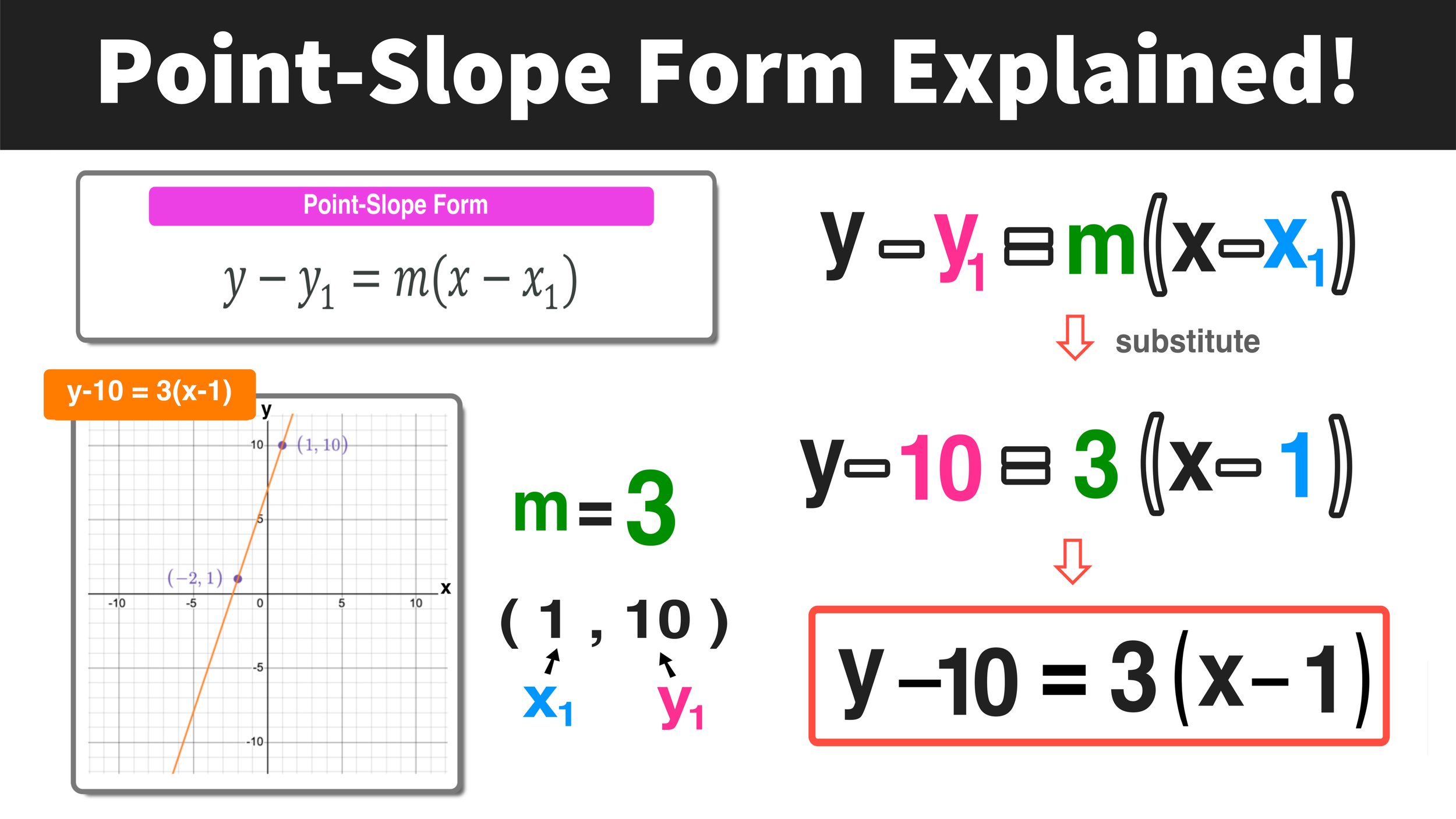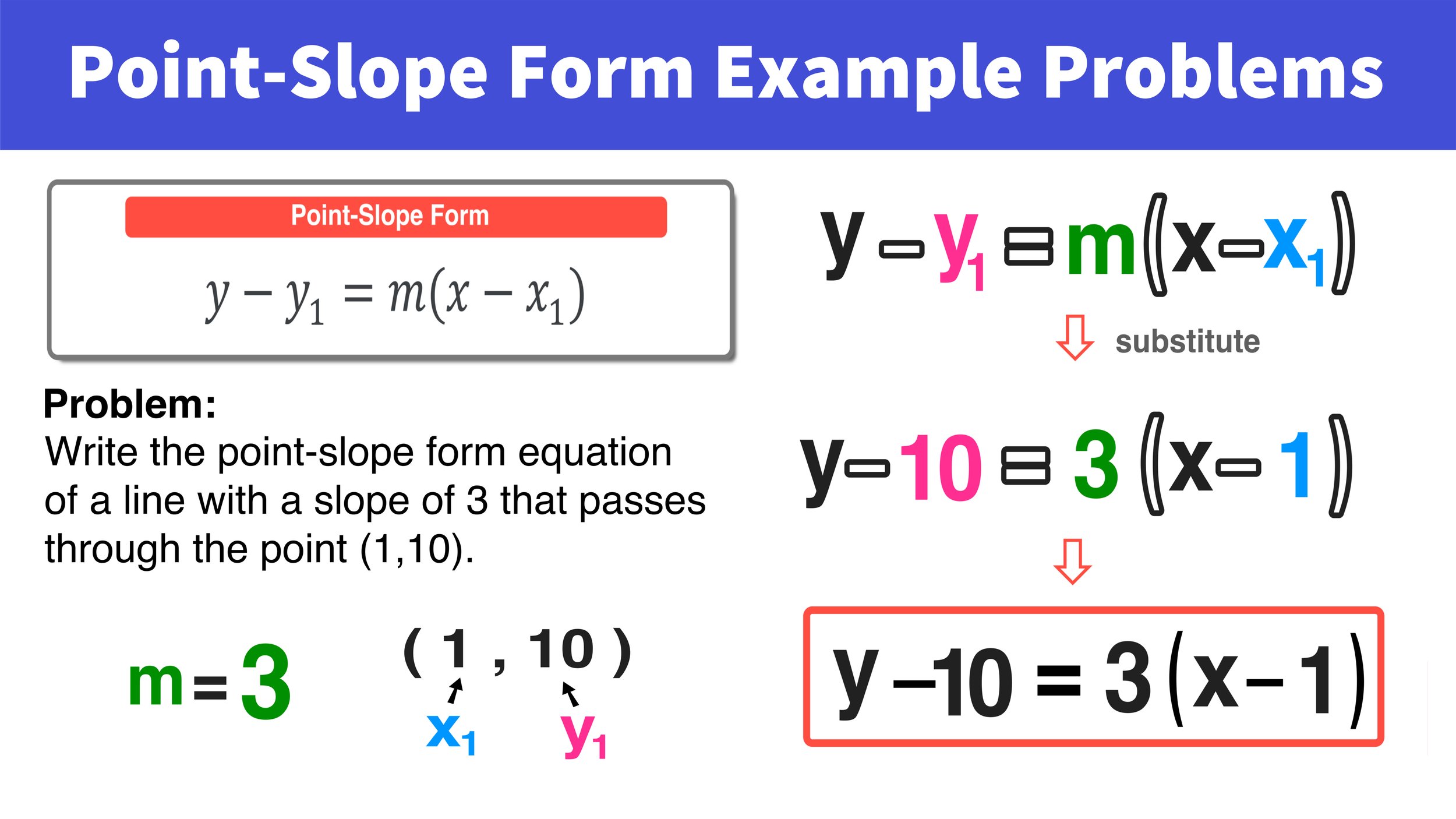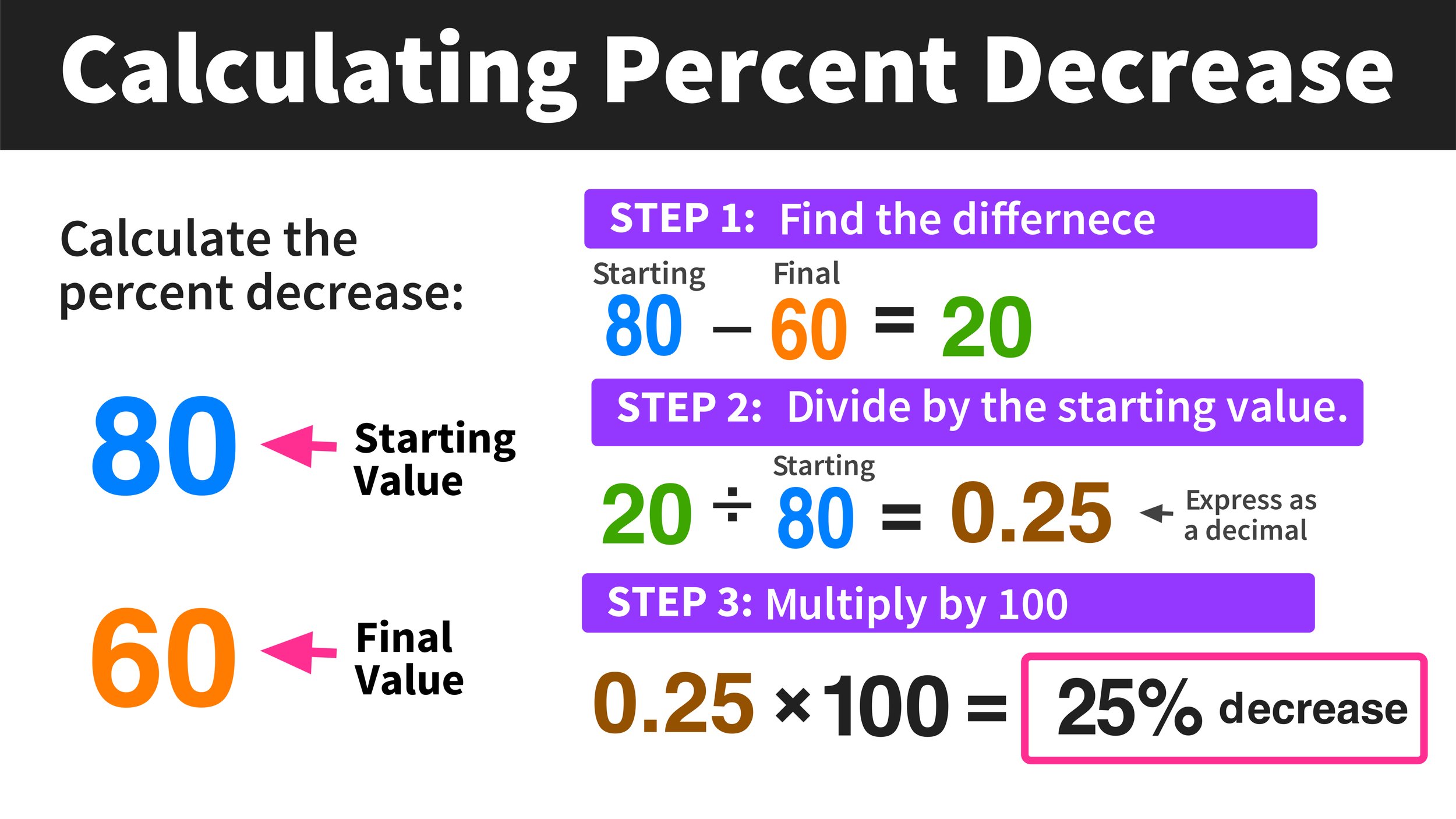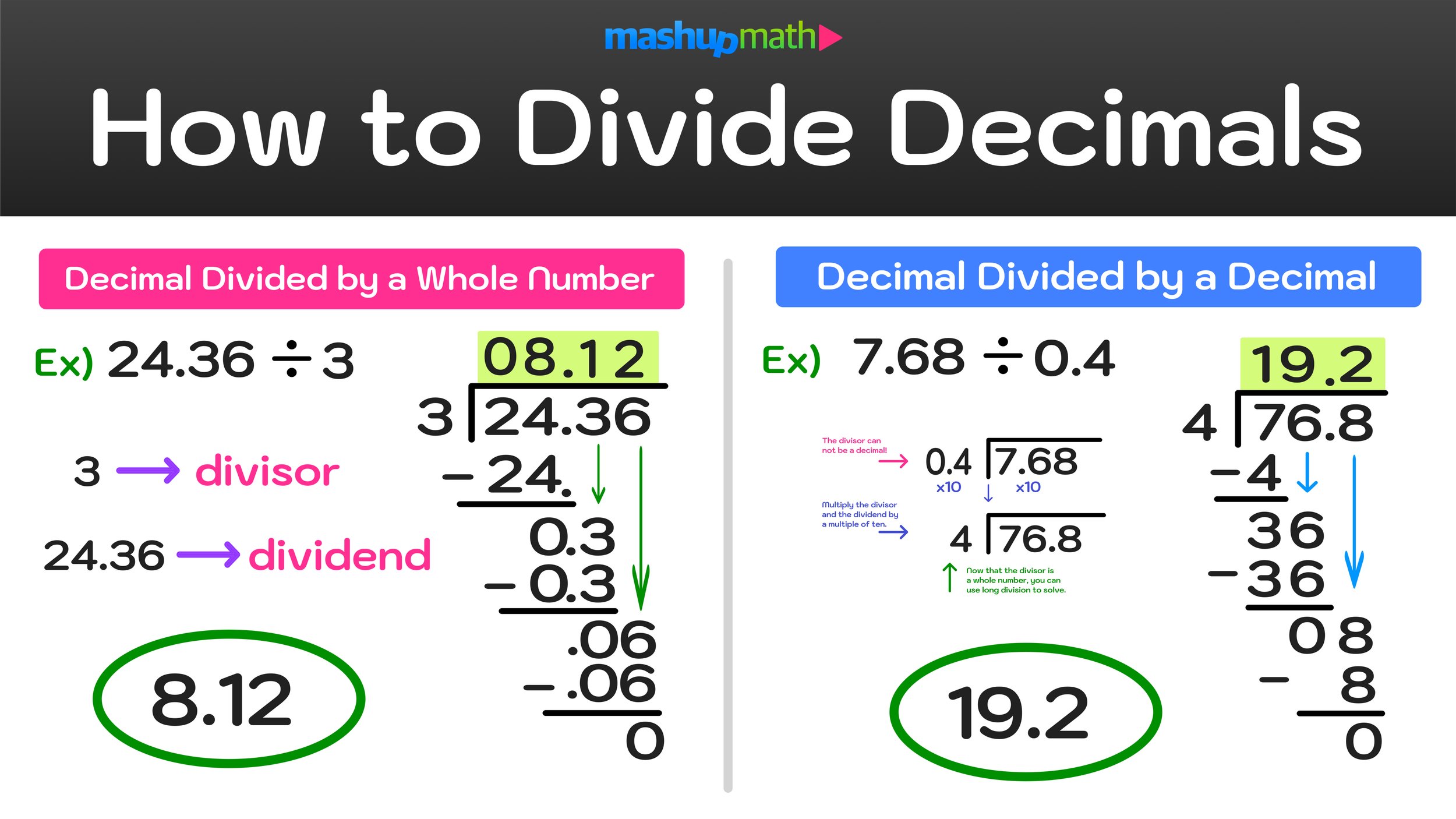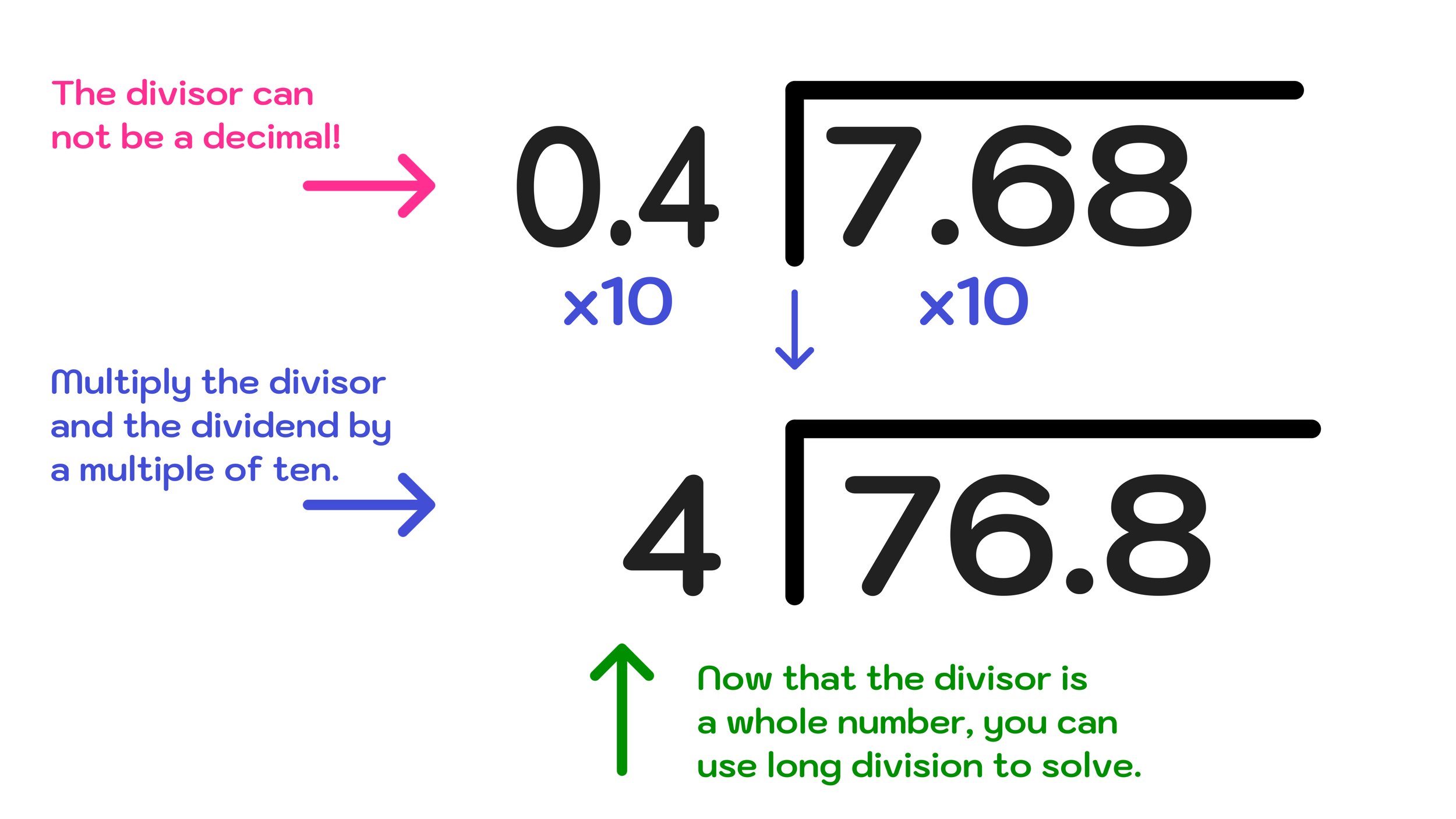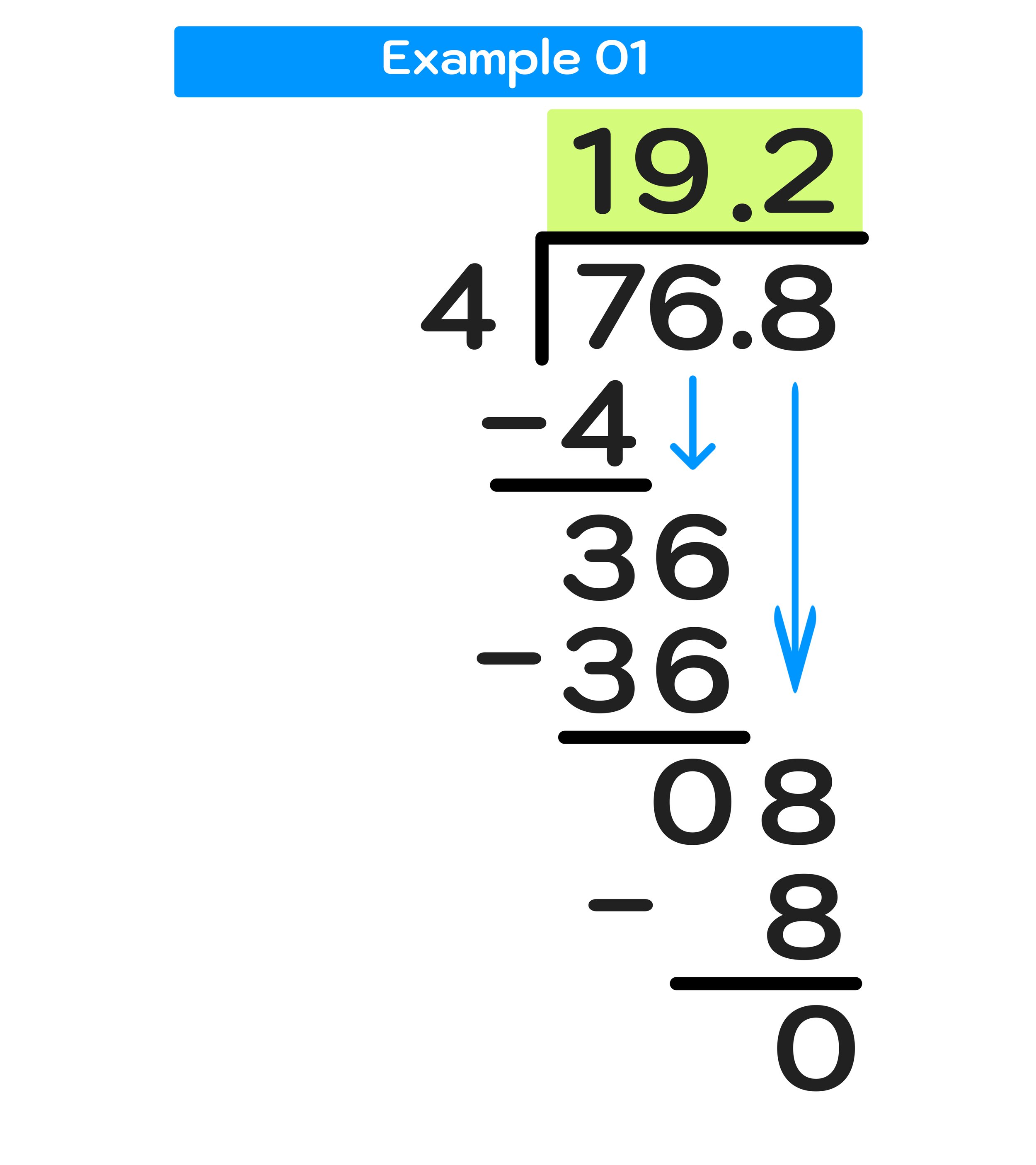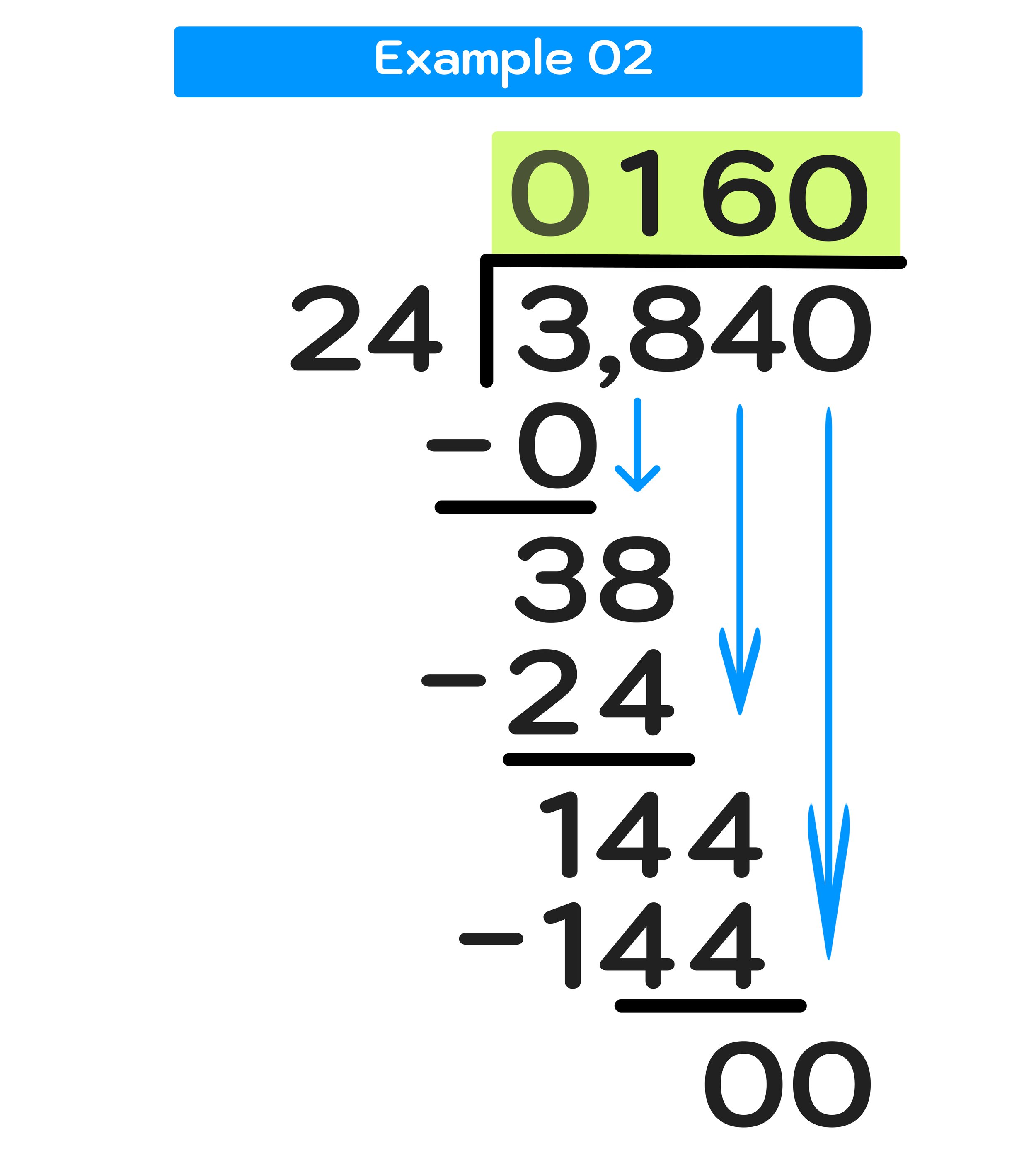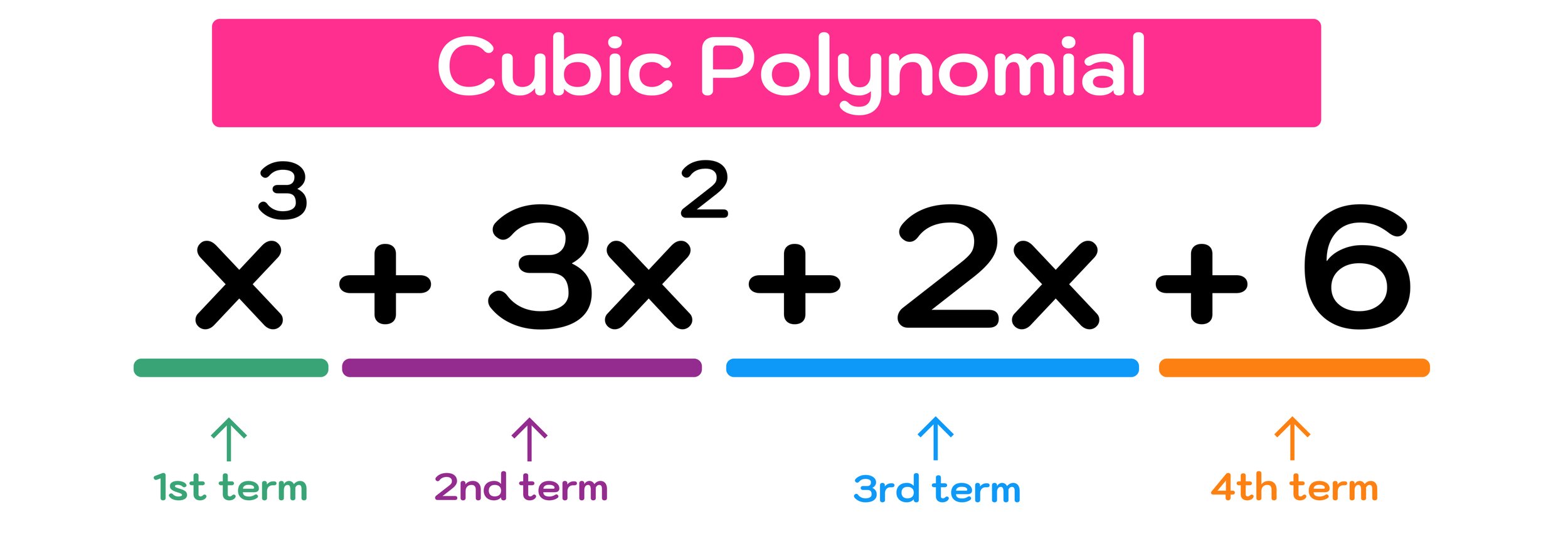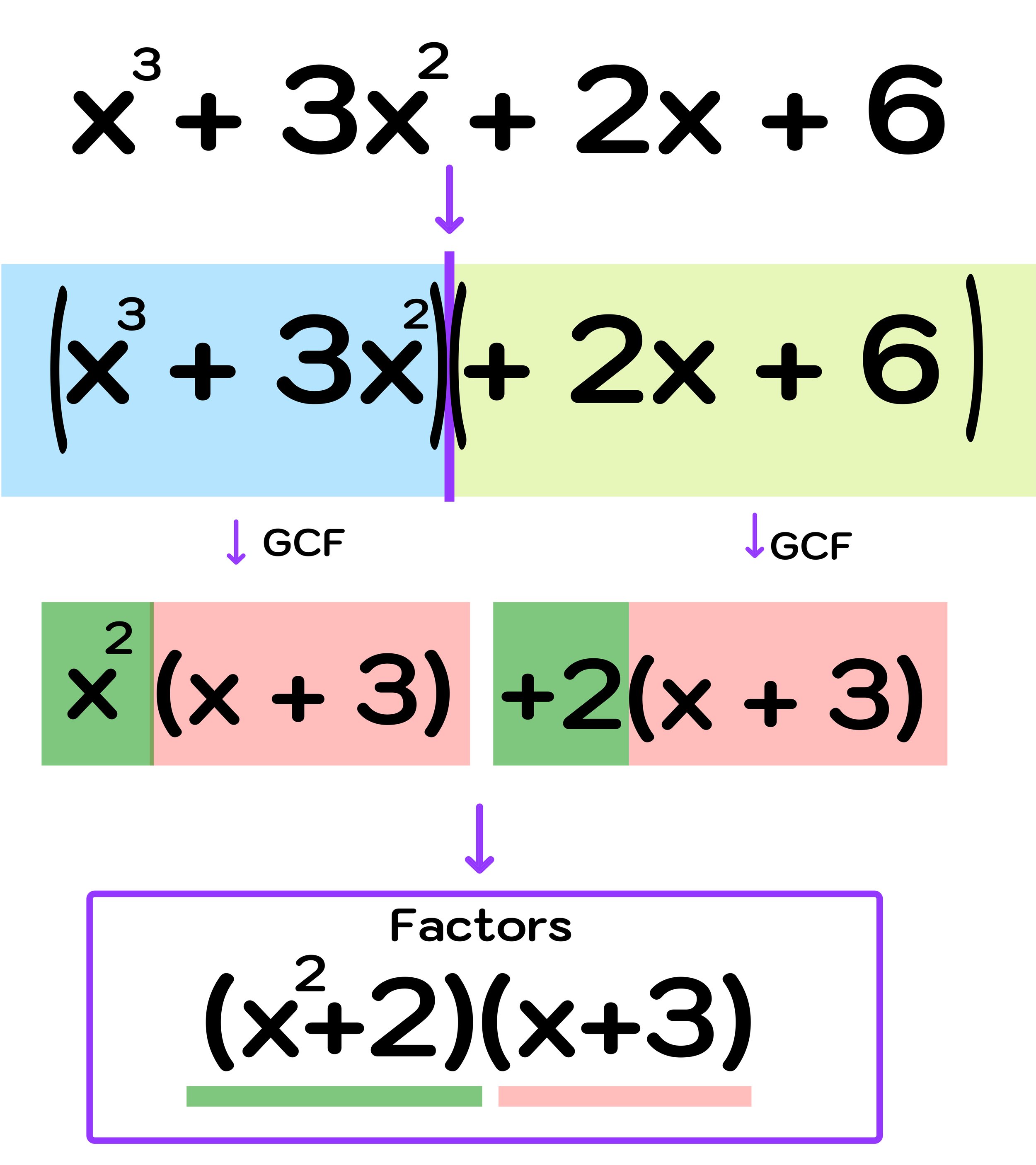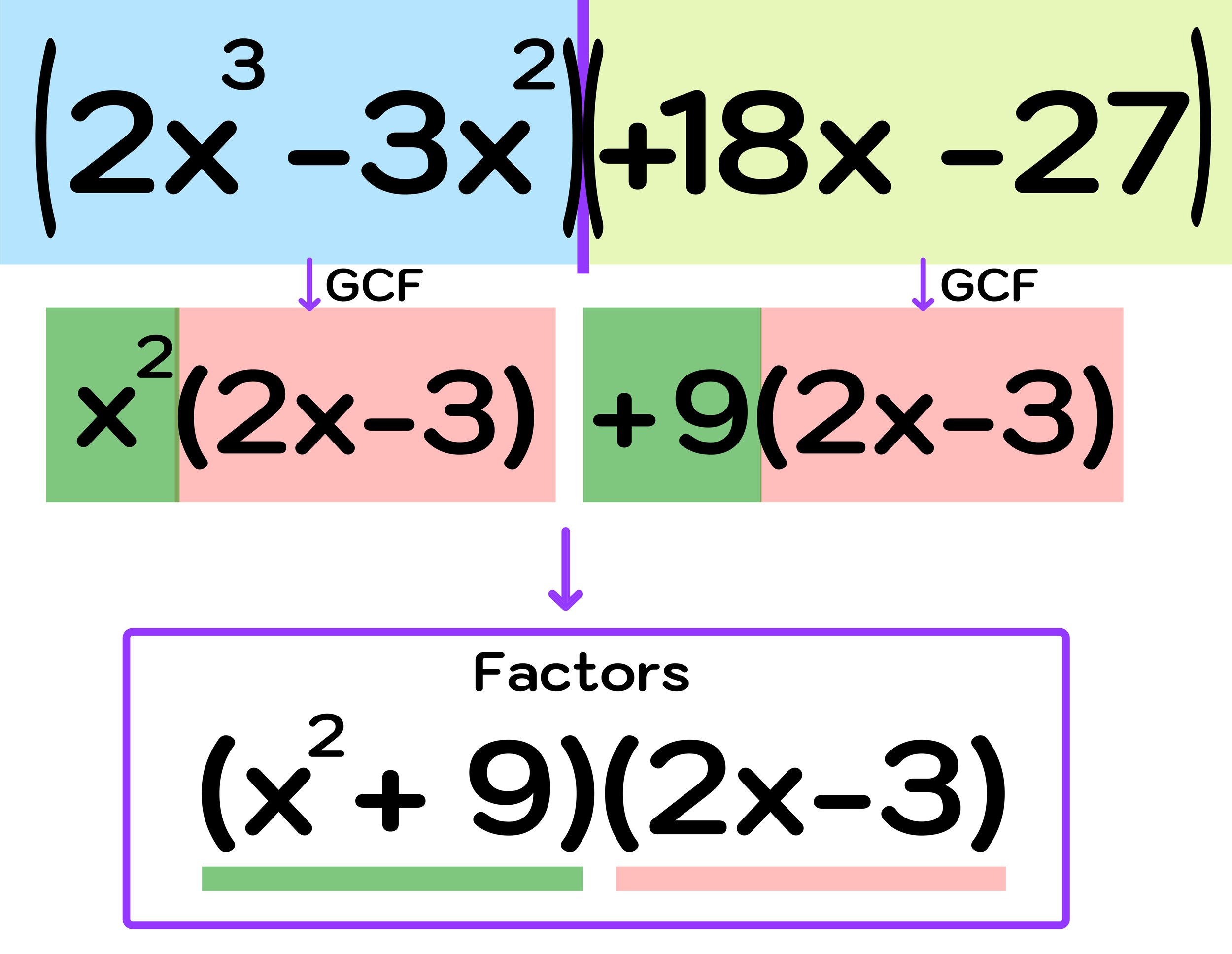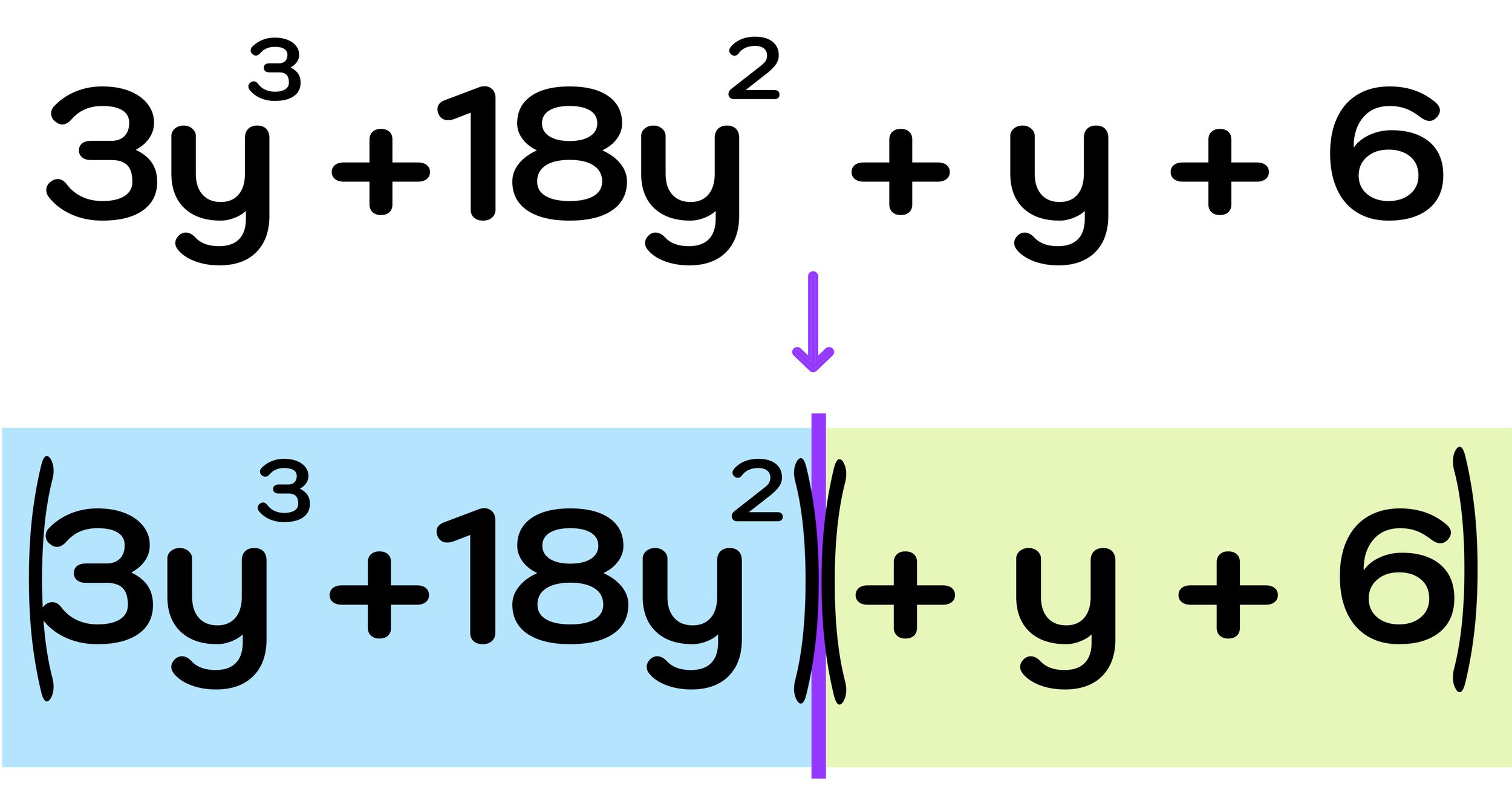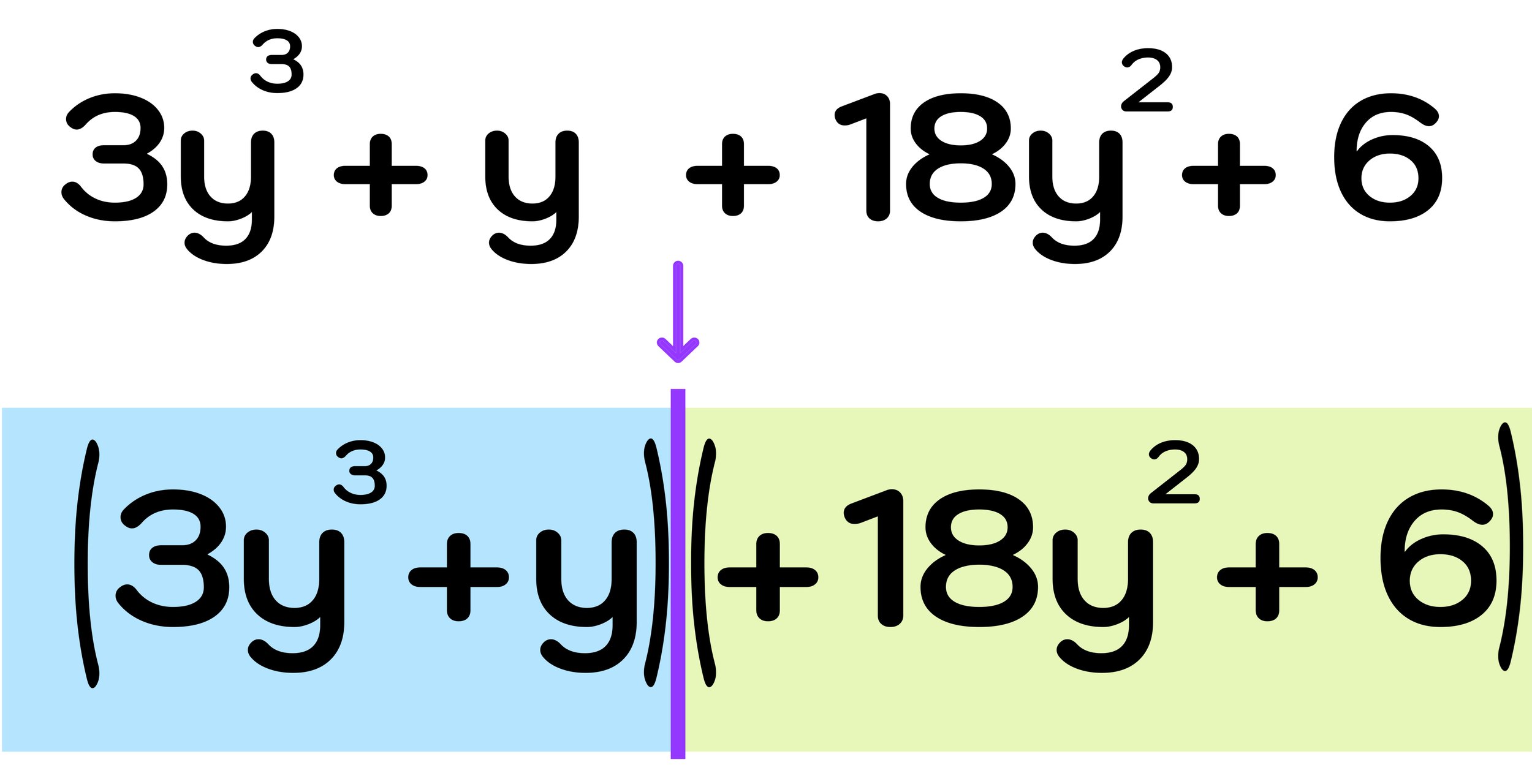How to Round to the Nearest Hundredth
Step-by-Step Guide: Rounding to the Nearest Hundredth in 3 Easy Steps
Knowing how to round numbers, especially numbers involving decimals, is an incredibly useful math skill that will help you to work large and small numbers and estimate their values.
While rounding whole numbers can be relatively straightforward, the process gets a little trickier when decimals are involved. However, this guide will make sure that you are familiar with key vocabulary and our easy-to-follow three-step method for rounding numbers to the nearest hundredth. Once you learn to apply this method, you can use it to solve any problem where you are tasked with rounding to the nearest hundredth.
Are you ready to get started? The following free guide will teach you everything you need to know about rounding to the nearest hundredth including step-by-step explanations of solving several practice problems.
While we highly recommend that you read each section in order, you can use the quick links below to jump to a specific topic or section:
(Looking for help with rounding to the nearest tenth and rounding to the nearest thousandth?)
What does rounding a number mean?
Rounding a number is the process of rewriting a number to a value that closely estimates its actual value so that is easier to understand and perform operations on.
For example, if a large coffee costs $4.97, you could estimate the cost to be $5 even (this would be an example of rounding to the nearest whole number). If someone asked you how much money you would need to purchase six coffees, you could easily estimate the cost to be $30 (since 5 x 6 =30), rather than having to figure out the value of 4.97 x 6.
So, rounding is just a method of making larger or small numbers easier to work with.
Figure 01: An example of rounding is estimating that the cost of a $4.97 cup of coffee to be $5 since it is an easier number to work with.
When do you round down and when do you round up?
Now that you understand what rounding means, it is important that you know the difference between situations when you have to round up and when you have to round down.
In the case of rounding, the number 5 is extremely significant.
RULE: If the number to the right of the number you are rounding is 5 or greater, then you must round up. If the number to the right of the number you are rounding is 4 or less, then you must round down.
This rule applies to rounding any whole number or decimal number. To help you to remember this rule, you can use the “rounding hill” shown in Figure 02 below to help you remember when to round up and when to round down.
If digit to the right of the number being rounded is 4 or less → round down
If digit to the right of the number being rounded is 5 or greater → round up
For example, if you wanted to round 58 to the nearest ten, the rounded answer is 60 since 8 (the number to the right of the tens digit) is 5 or greater, meaning you have to round up.
58 → 8 is 5 or greater, so round up → 60
On the other hand, if you wanted to round 43 to the nearest ten, the result would be 40 since 3 (the number to the right of the tens digit) is 4 or less, meaning you have to round down.
43 → 3 is 4 or less, so round down → 40
Figure 02: This illustration of a “rounding hill” can help you to remember when to round up and when to round down.
What does rounding to the nearest hundredth mean in terms of place value?
The last key topic that we have to review before we start working on some examples of rounding to the nearest hundredth is place value.
Definition: Place Value is the numerical value that a digit has based on its position in the number.
Consider the number 472.893
We can think of the number 472.893 as the sum of:
4 hundreds
7 tens
2 ones
8 tenths
9 hundredths
3 thousandths
Just like the “rounding hill” in Figure 02, you can use a place value chart, as shown in Figure 03 below, as a visual tool to help you to correctly identify the place values of digits in any given number.
▶ FREE DOWNLOAD: Blank Decimal Place Value Chart (PDF File)
Before moving forward, make sure that you have a strong understanding of place value and that you can correctly identify place values, especially for values to the right of a decimal sign.
Figure 03: You can use a place value chart to help you to correctly identify the place value of each digit in a number.
Keep Learning: Where is the hundredths place value in math?
Since this guide focuses on rounding to the nearest hundredth, here are a few examples of identifying the hundredths and thousandths place value digit for the following numbers.
5.279 → 7 is in the hundredths decimal place, 9 is in the thousandths decimal place
76.105 → 0 is in the hundredths decimal place, 5 is in the thousandths decimal place
0.444 → 4 is in the hundredths decimal place, 4 is in the thousandths decimal place
2,000.018 → 1 is in the hundredths decimal place, 8 is in the thousandths decimal place
Figure 04: How to identify the hundredths and thousandths decimal places in a given number.
How to Round to the Nearest Hundredth using 3 Simple Steps
Ready to work through some practice problems focused on rounding to the nearest hundredth?
For all of the practice problems in this guide, you can use the following 3-step process for rounding to the nearest hundredth:
Step One: Identify the value in the thousandths decimal place and ignore all numbers to the right of it
Step Two: Determine if the value in the thousandths decimal place is 5 or larger or 4 or smaller
Step Three: If the value in the thousandths decimal place is 5 or larger, round the number directly to the left (the value in the hundredths decimal place) up. If the value in the thousandths decimal place is 4 or smaller, round it down to zero.
If these three steps seam confusing at first, that’s okay. They will make more sense once you get some experience applying them to the following practice problems.
Example #1: Round to the Nearest Hundredth: 4.253
Starting off with our first example, we are tasked with rounding the number 4.253 to the nearest hundredth.
We can solve this problem by applying the 3-step method as follows:
Step One: Identify the value in the thousandths decimal place and ignore all numbers to the right of it
For the number 4.253, the 3 is in the thousandths decimal place slot (and there are no additional numbers to the right of it).
Figure 05: For the number 4.253, the number 3 is in the thousandths place value slot.
Step Two: Determine if the value in the thousandths decimal place is 5 or larger or 4 or smaller
For this example, 3 is in the thousandths place value slot and 3 is 4 or smaller, so we will have to round down in the third and final step.
Step Three: If the value in the thousandths decimal place is 5 or larger, round the number directly to the left (the value in the hundredths decimal place) up. If the value in the thousandths decimal place is 4 or smaller, round it down to zero.
In the last step, we determined that the value in the thousandths place value slot, 3, is 4 or smaller and that we have to round down. When rounding down, we turn that 3 in the thousandths place value slot into a zero, which effectively makes it disappear. Now, we can conclude that:
Final Answer: 4.254 rounded to the nearest hundredth is 4.25
The final answer to Example 1 (and the steps to solving it) is displayed in Figure 06 below.
Figure 06: When rounding down, the number in the thousandths decimal spot becomes a zero and disappears.
Example #2: Round to the Nearest Hundredth: 4.257
Notice that Example #2 is very similar to Example #1. The only difference is that, in this example, the value of the number in the thousandths place value slot is a 7 (rather than a 3).
Let’s go ahead and apply our 3-step method to see how this difference affects our answer.
Step One: Identify the value in the thousandths decimal place and ignore all numbers to the right of it
For the number 4.257, the 7 is in the hundredths place value slot as illustrated in Figure 07 below.
Figure 07: The thousandths place value slot is three digits to the right of the decimal point.
Step Two: Determine if the value in the thousandths decimal place is 5 or larger or 4 or smaller
As previously stated, for this example, the value of the number in the thousandths place value slot is a 7, which is 5 or larger.
Step Three: If the value in the thousandths decimal place is 5 or larger, round the number directly to the left (the value in the hundredths decimal place) up. If the value in the thousandths decimal place is 4 or smaller, round it down to zero.
Since the value in the thousandths place value slot is 5 or larger, we have to round up to solve this problem. When rounding up, we have to add one to number in the tenths place value slot (the number directly to the left of the number in the thousandths place value slot) and “zero out” the number in the thousandths place value slot.
Final Answer: 4.257 rounded to the nearest hundredth is 4.26
The entire process of solving this second example is illustrated in Figure 08 below.
Figure 08: 4.257 rounded to the nearest thousandth is 4.26.
Before we move onto more practice problems, Figure 09 below compares the first two examples. Be sure that you understand the difference between rounding up and rounding down before moving on.
Figure 09: Comparing Example #1 (rounding down) and Example #2 (rounding up). What do you notice?
Example #3: Round to the Nearest Hundredth: 88.7309
For this third example, notice that there is a digit in the ten-thousandths decimal place (the value four digits to the right of the decimal point). While this number, 88.7309 is larger than the numbers in the first two examples, you can still use the 3-step method for rounding to the nearest hundredth to solve it.
Step One: Identify the value in the thousandths decimal place and ignore all numbers to the right of it
For the number 88.7309, the thousandths place value digit (the number three digits to the right of the decimal point) is 0. Remember that you can ignore any numbers to the right of the digit in the thousandths place value slot (which is the 9 in this example).
For the sake of rounding correctly, you can ignore the 9 and think of this number as 88.730.
Figure 10: Remember that you can ignore any numbers to the right of the digit in the thousandths place value slot.
Step Two: Determine if the value in the thousandths decimal place is 5 or larger or 4 or smaller
Next, notice that 0 is in the thousandths place value slot. Clearly, 0 is 4 or smaller.
Step Three: If the value in the thousandths decimal place is 5 or larger, round the number directly to the left (the value in the hundredths decimal place) up. If the value in the thousandths decimal place is 4 or smaller, round it down to zero.
Since 0 is 4 or smaller, we will have to round down. Since 0 is already 0, we can just make it disappear and make the following conclusion:
Final Answer: 88.7309 rounded to the nearest hundredth is 88.73
This final answer is shown in Figure 11 below.
Figure 11: 88.7309 rounded to the nearest hundredth is 88.73.
Example #4: Round to the Nearest Hundredth: 29.48736
Similar to the previous example, 29.48736 includes numbers the right of the thousandths decimal place. Remember that you can ignore these numbers and use the three steps to solve this problem as follows:
Step One: Identify the value in the thousandths decimal place and ignore all numbers to the right of it
For the number 29.48736, the number 7 is in the thousandths place value slot.
Figure 12: When rounding to the nearest hundredth, the number in the thousandths place value slot will determine if you have to round up or down.
Step Two: Determine if the value in the thousandths decimal place is 5 or larger or 4 or smaller
Since 7, the number in the thousandths place value slot, is 5 or larger, we will have to round up in step three.
Step Three: If the value in the thousandths decimal place is 5 or larger, round the number directly to the left (the value in the hundredths decimal place) up. If the value in the thousandths decimal place is 4 or smaller, round it down to zero.
To round this number to the nearest hundredth, you must add one to the 8 in the tenths place value slot and zero out the 7.
Final Answer: 29.48736 rounded to the nearest hundredth is 29.49
The complete three-step process for solving example #5 is shown in Figure 13 below.
Figure 13: 90.352 rounded to the nearest tenth is equal to 90.4
Example #5: Round to the Nearest Hundredth: 8.495
By now, you should be a bit more comfortable with rounding to the nearest hundredth. Let’s continue on to work through two more examples where we will gain more experience using the 3-step method.
For this next example, we have to round the number 8.495 to the nearest hundredth.
Step One: Identify the value in the thousandths decimal place and ignore all numbers to the right of it
For the number 9.495, the digit in the thousandths place value slot is 5, as shown in Figure 14 below.
Figure 14: How to Round to the nearest Hundredth: When the digit in the thousandths place value slot is 5 or larger, you have to round up.
Step Two: Determine if the value in the thousandths decimal place is 5 or larger or 4 or smaller
Next, we can see that 5 (digit in the thousandths place value slot) is indeed 5 or larger.
Step Three: If the value in the thousandths decimal place is 5 or larger, round the number directly to the left (the value in the hundredths decimal place) up. If the value in the thousandths decimal place is 4 or smaller, round it down to zero.
Since 5 is 5 or larger, we will have to round up. The number directly to the left of the thousandths digit is a 9, so how do we round it up without turning it into a double-digit number? In the case of rounding up the number 9, you must turn it into a zero and add one to the number directly to its left (this process is illustrated in Figure 15 below).
Final Answer: 8.495 rounded to the nearest hundredth equals 8.50
Figure 15: 8.495 rounded to the nearest hundredth equals 8.50
Example #6: Round to the Nearest Hundredth: 64.01408
Here is our final practice problem for rounding to the nearest hundredth!
To solve it, let’s go ahead and apply our 3-step method as follows:
Step One: Identify the value in the thousandths decimal place and ignore all numbers to the right of it
For this last problem, the digit in the thousandths place value slot is 4, as shown below in Figure 16. Remember that all of the digits to the right of the 4 can be ignored.
Figure 16: Remember that, when it comes to rounding to the nearest tenth, you can ignore any additional numbers that come after the digit in the thousandths decimal slot.
Step Two: Determine if the value in the thousandths decimal place is 5 or larger or 4 or smaller
Notice that the value in the thousandths place value slot is a 4, which is 4 or smaller.
Step Three: If the value in the thousandths decimal place is 5 or larger, round the number directly to the left (the value in the hundredths decimal place) up. If the value in the thousandths decimal place is 4 or smaller, round it down to zero.
Since the value in the thousandths place value slot is 4 or smaller, you can round it down to zero. Therefore, the 4 will disappear and we are left with the following result:
Final Answer: 64.01408 rounded to the nearest hundredth is 64.01
Figure 17: 64.01408 rounded to the nearest hundredth is 64.01
Conclusion: How to Round to the Nearest Hundredth
In math, it is important to know how to estimate and round numbers to make them easier to work with. This skill is especially important when it comes to working with decimal numbers.
By working through this step-by-step tutorial on rounding numbers to the nearest hundredth, you learned a simple 3-step process that you can use to round any number to the nearest hundredth. The 3-steps outlined in this guide are as follows:
Step One: Identify the value in the thousandths decimal place and ignore all numbers to the right of it
Step Two: Determine if the value in the thousandths decimal place is 5 or larger or 4 or smaller
Step Three: If the value in the thousandths decimal place is 5 or larger, round the number directly to the left (the value in the hundredths decimal place) up. If the value in the thousandths decimal place is 4 or smaller, round it down to zero.
Once you understand how to correctly apply these three steps, you can use them to solve any problem that requires you to round to the nearest hundredth. Using this method, we solved six different rounding practice problems where we had to round a given number to the nearest hundredth. Here is a quick review of our results:
4.253 → 4.25
4.257 → 4.26
88.7309 → 88.73
29.48736 → 29.49
8.495 → 8.50
64.01408 → 64.01
Need more help? If so, we suggest going back and working through this step-by-step guide again (practice makes perfect after all). You can also gain some more rounding practice by downloading some free topic-specific worksheets available on our free math worksheet libraries.
Keep Learning:
How to Round to the Nearest Thousandth (Step-by-Step Guide)
Continue your rounding journey by learning how to round to the nearest thousandth.



